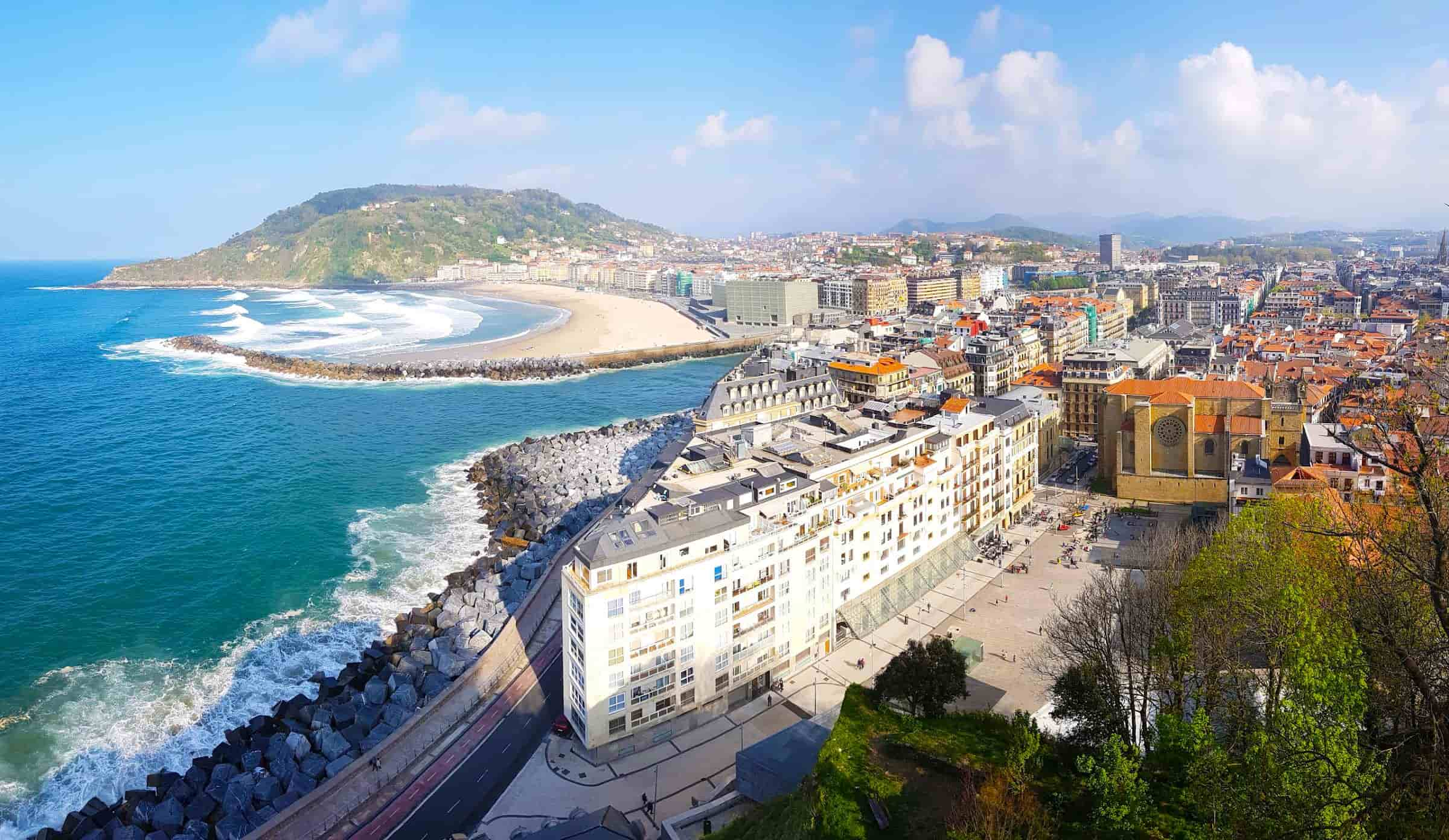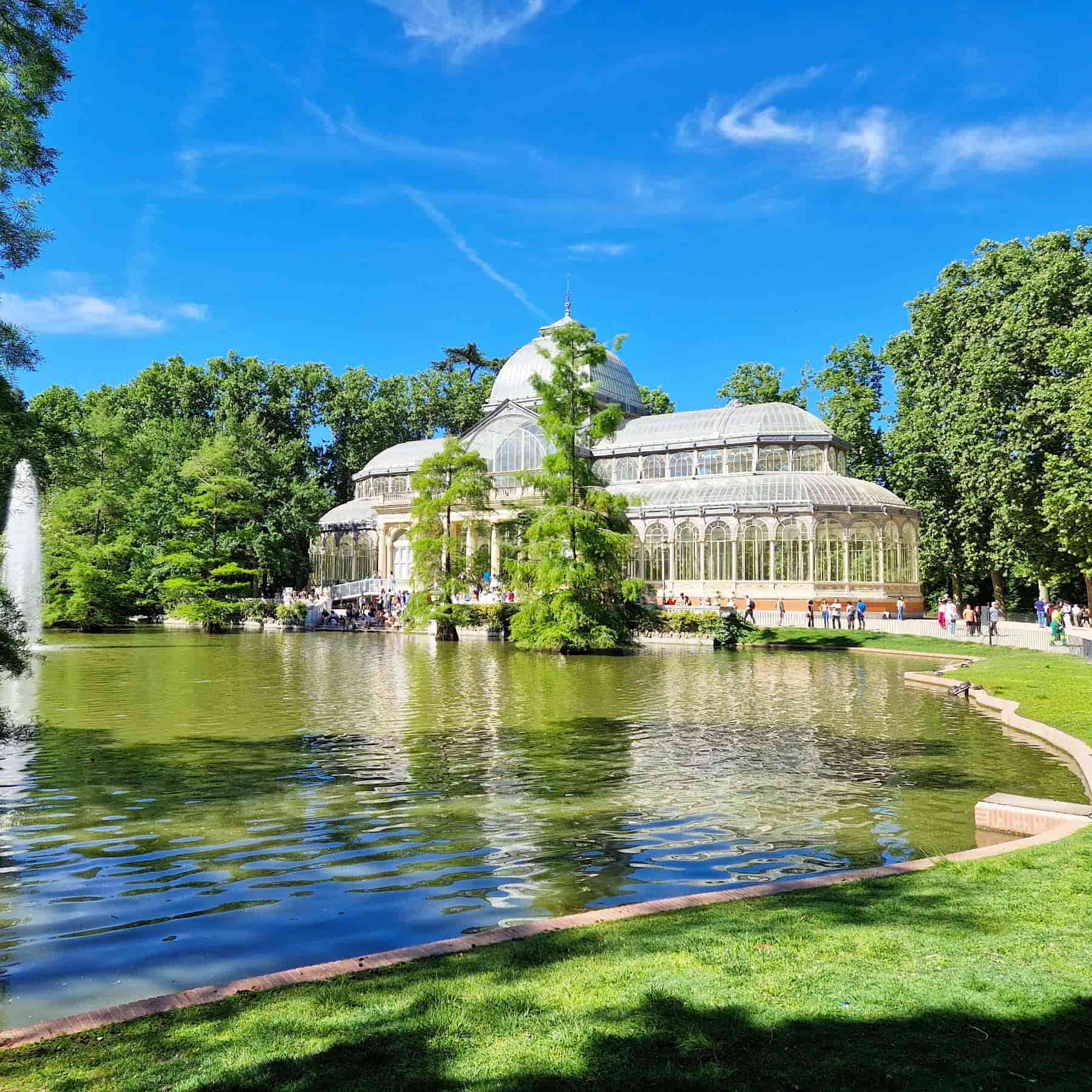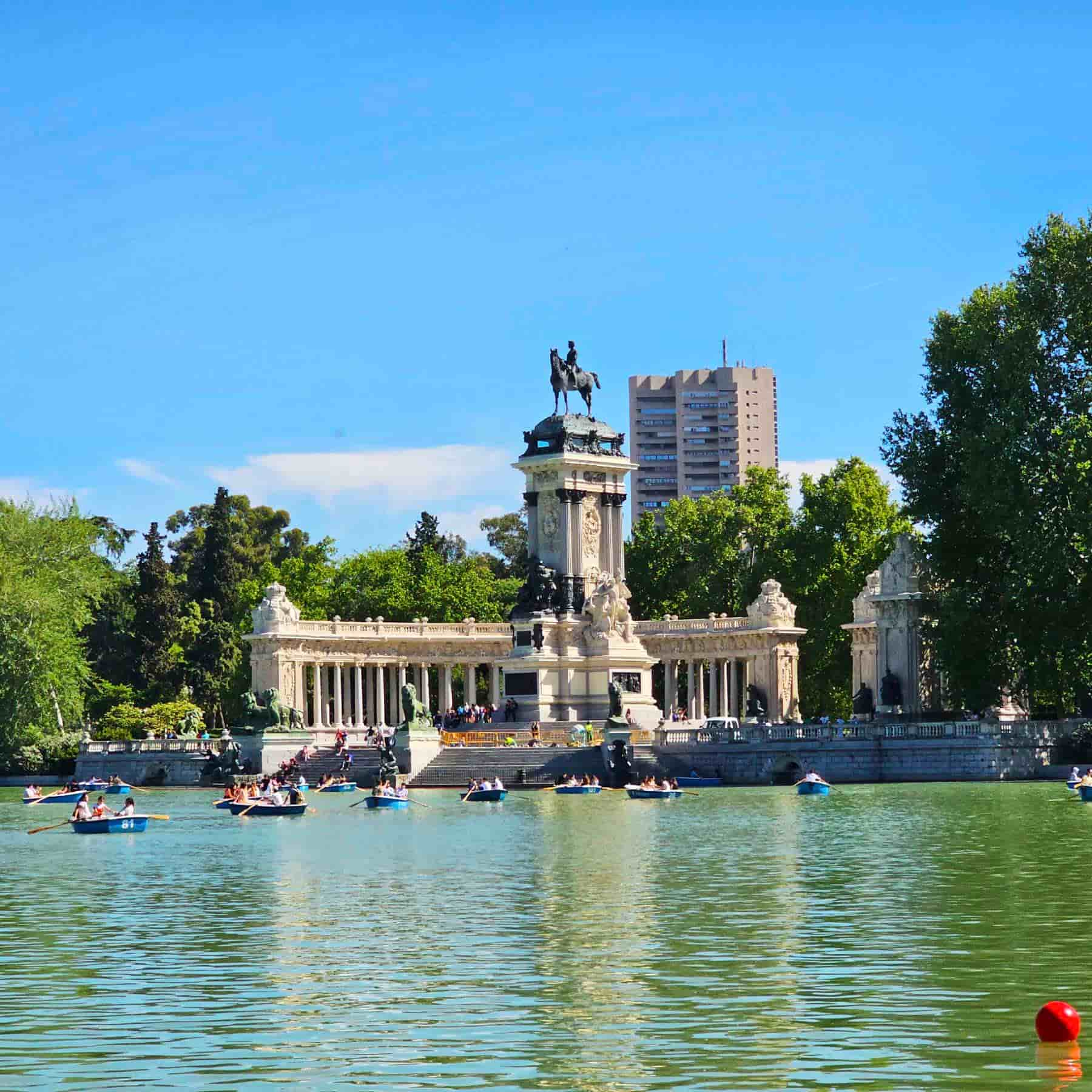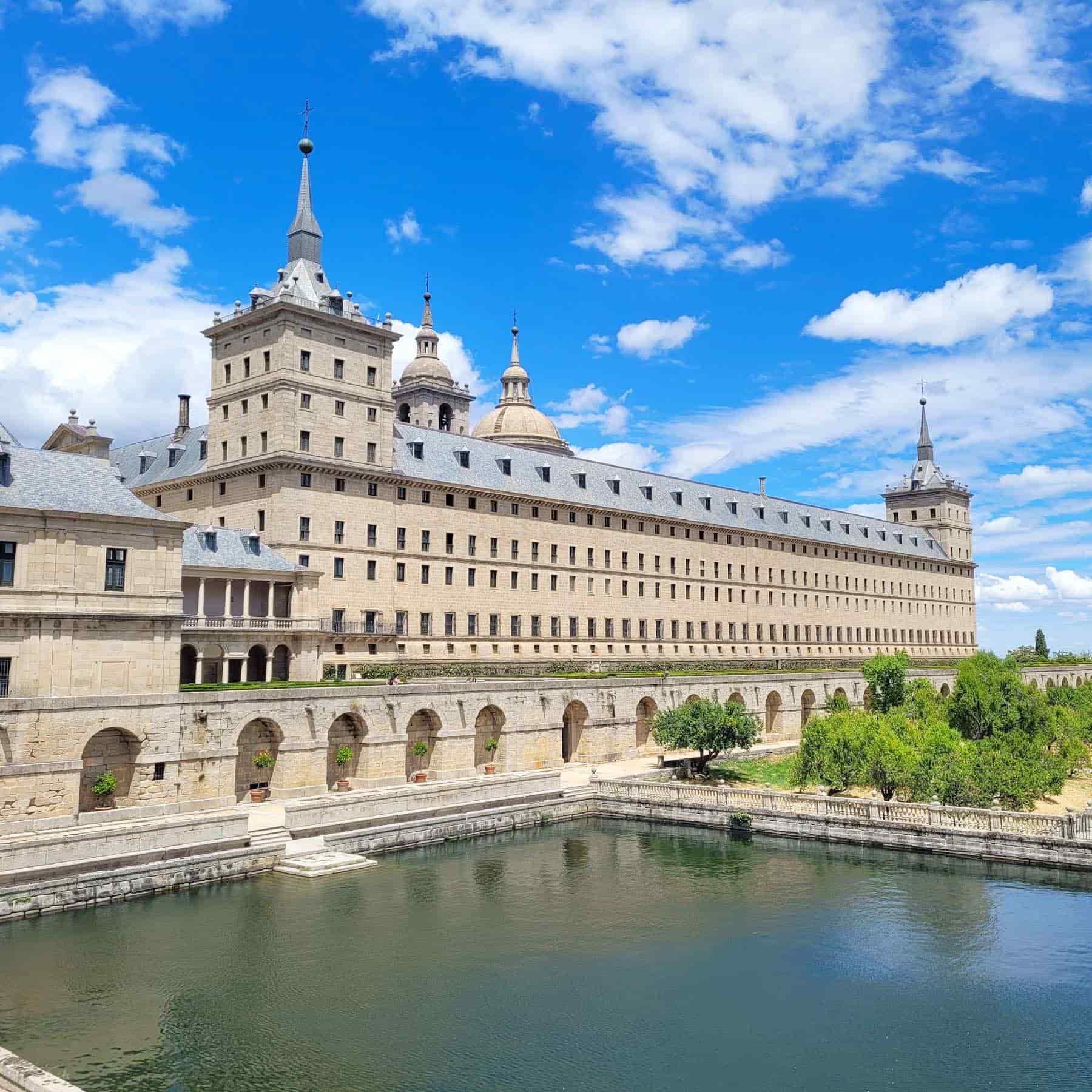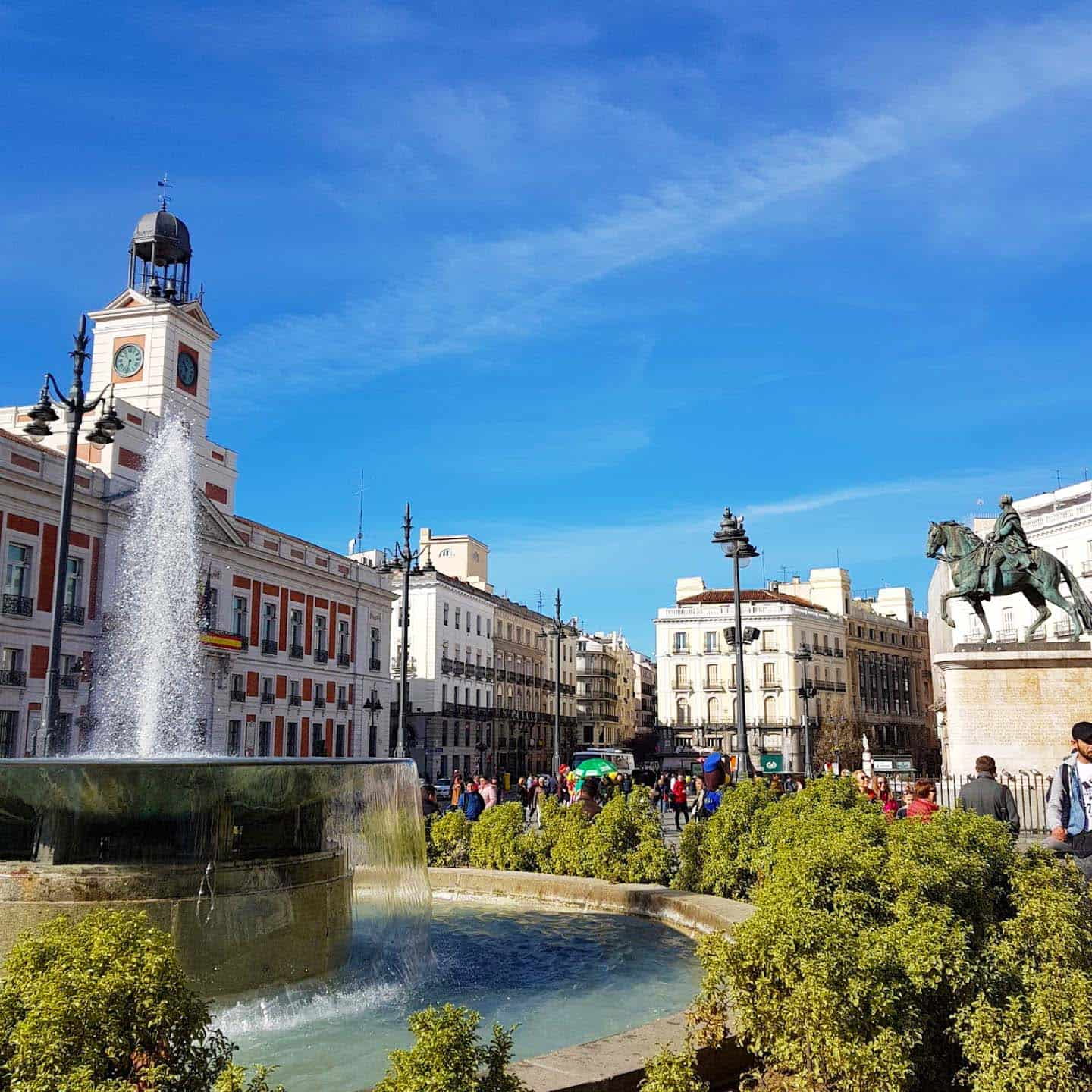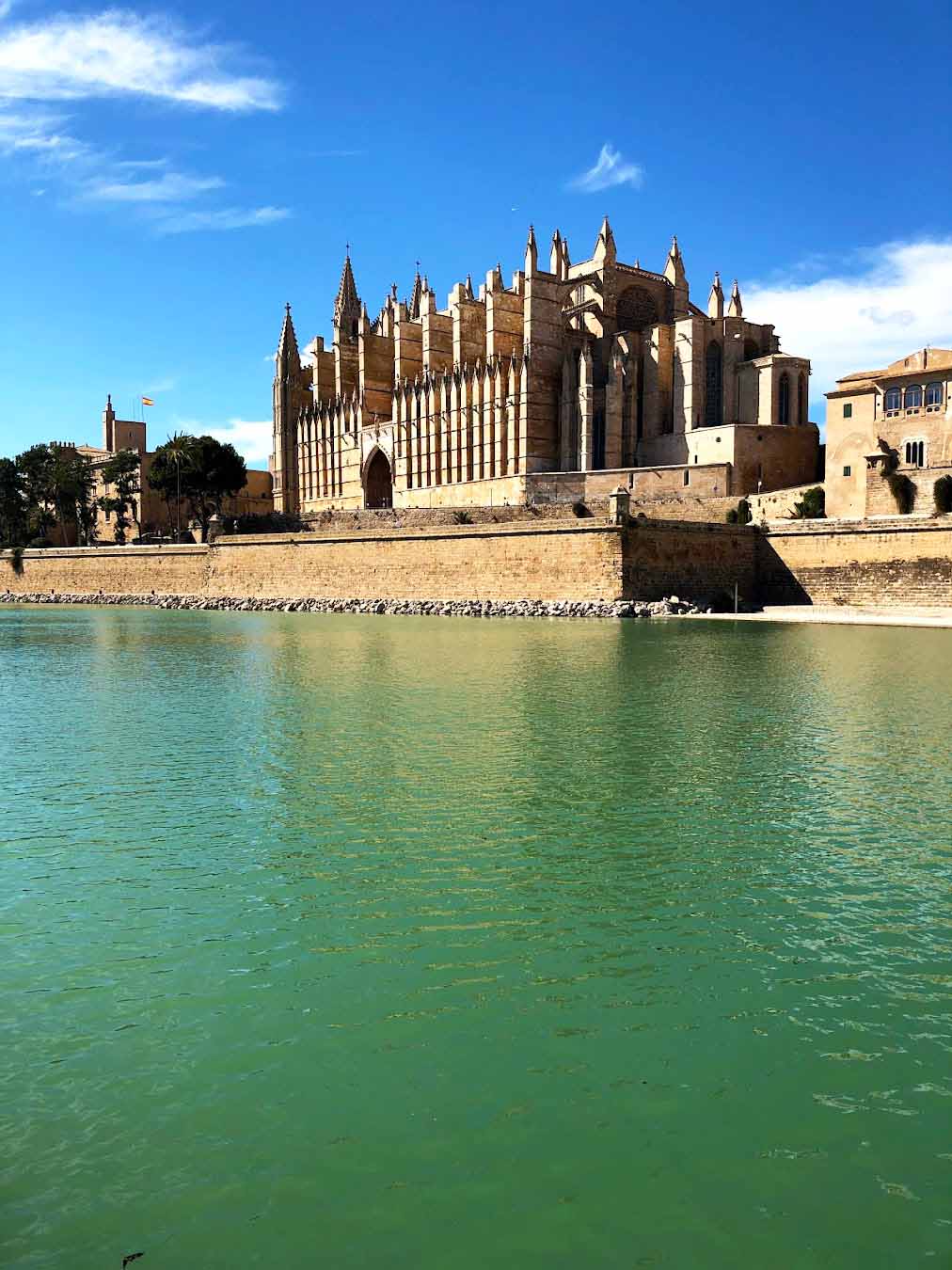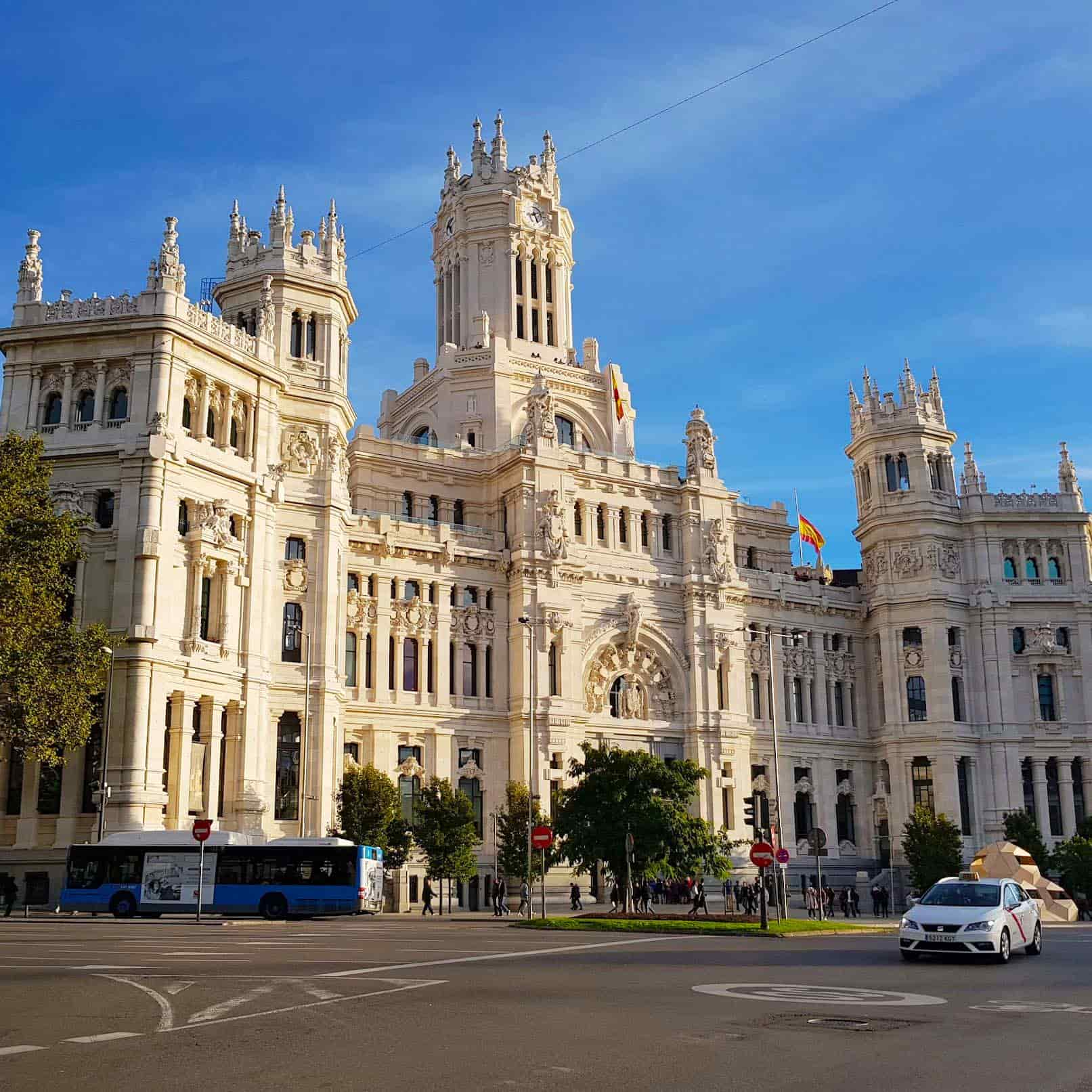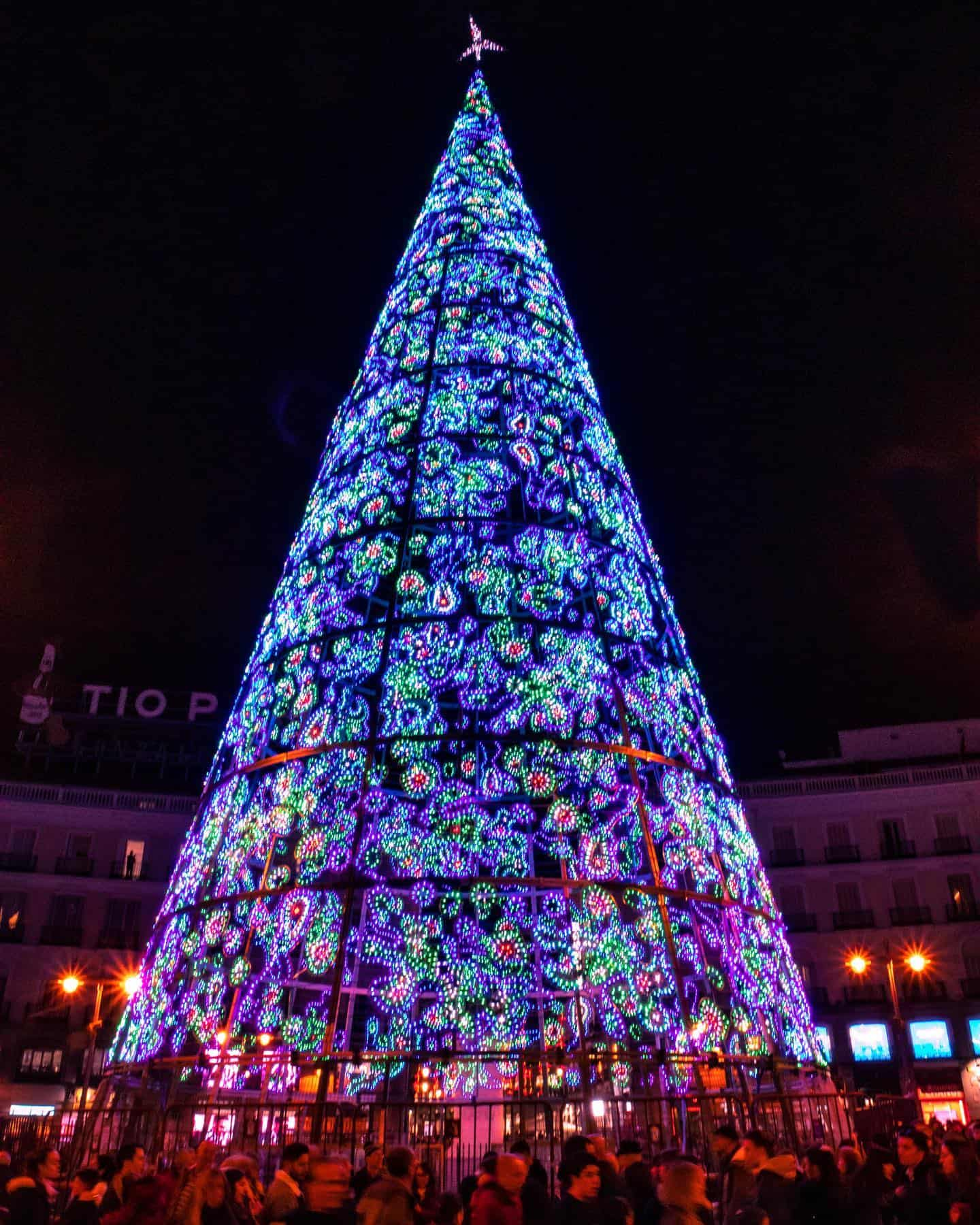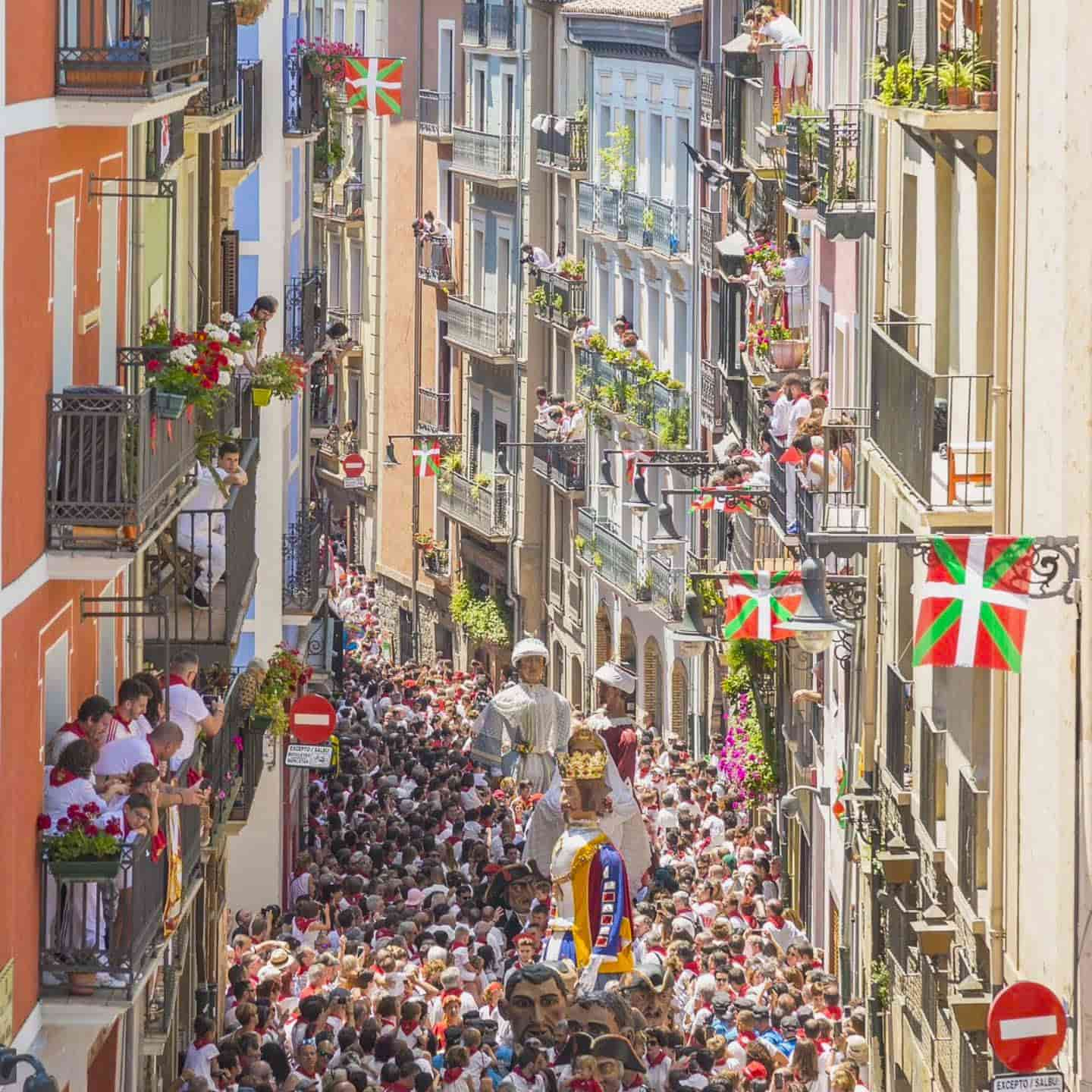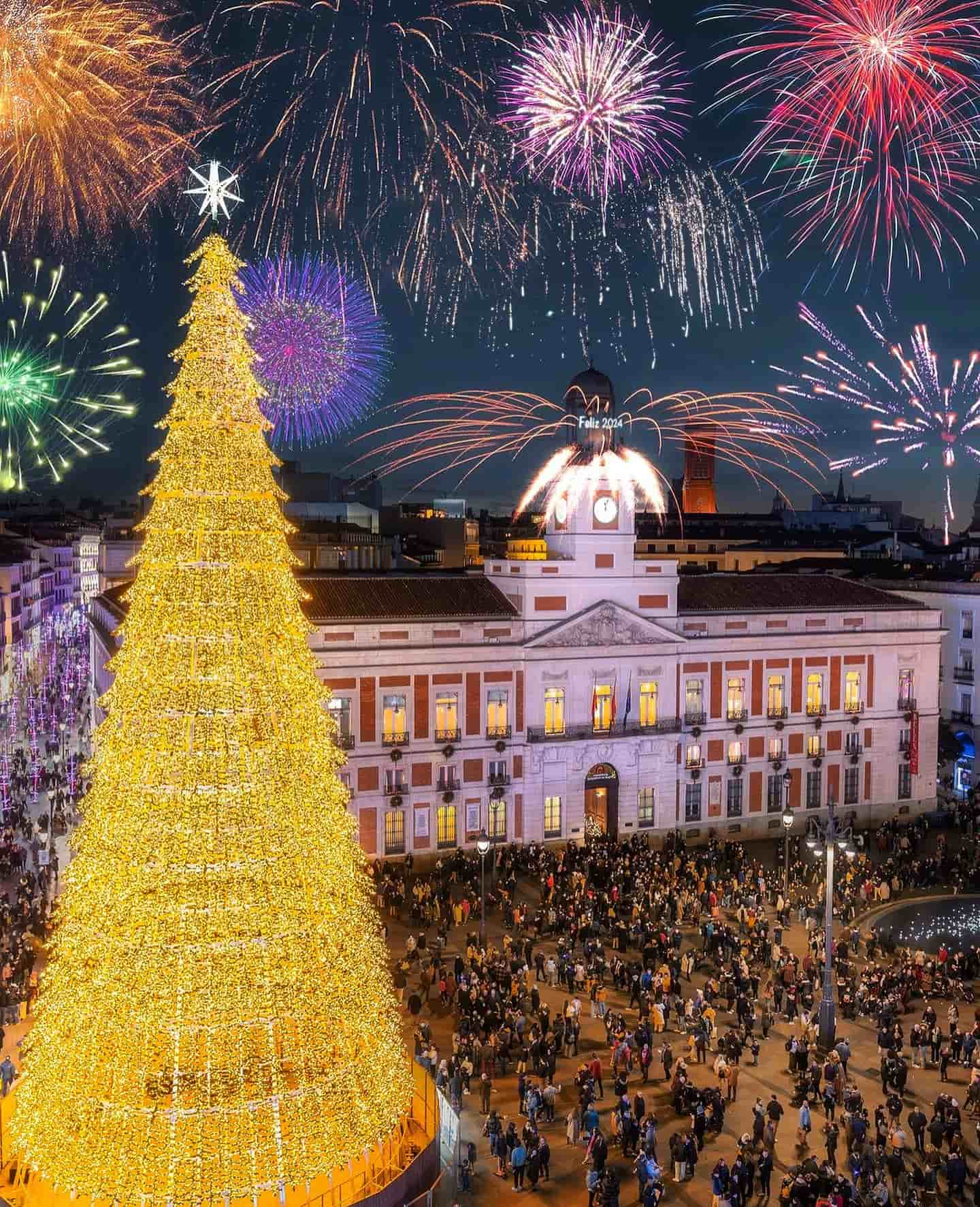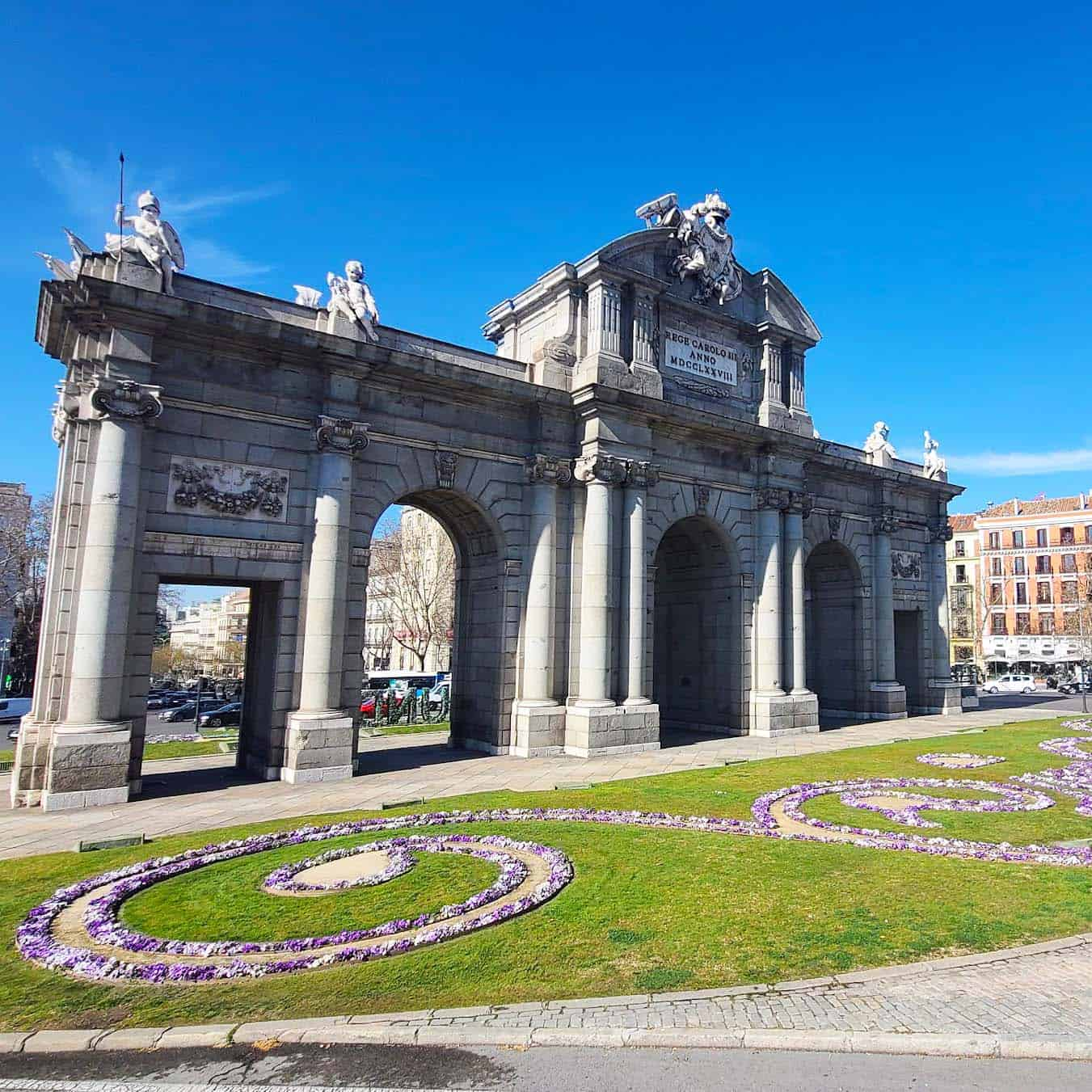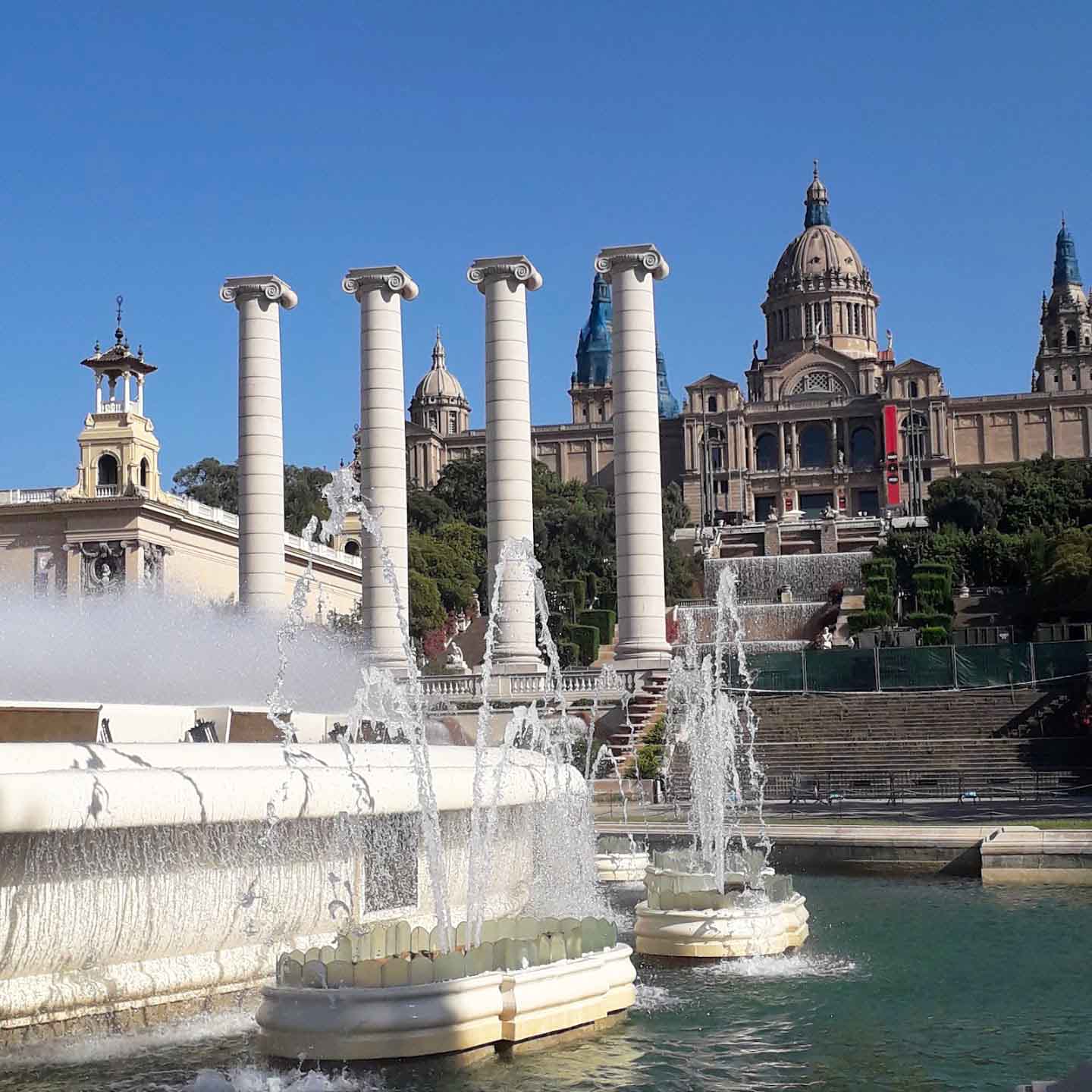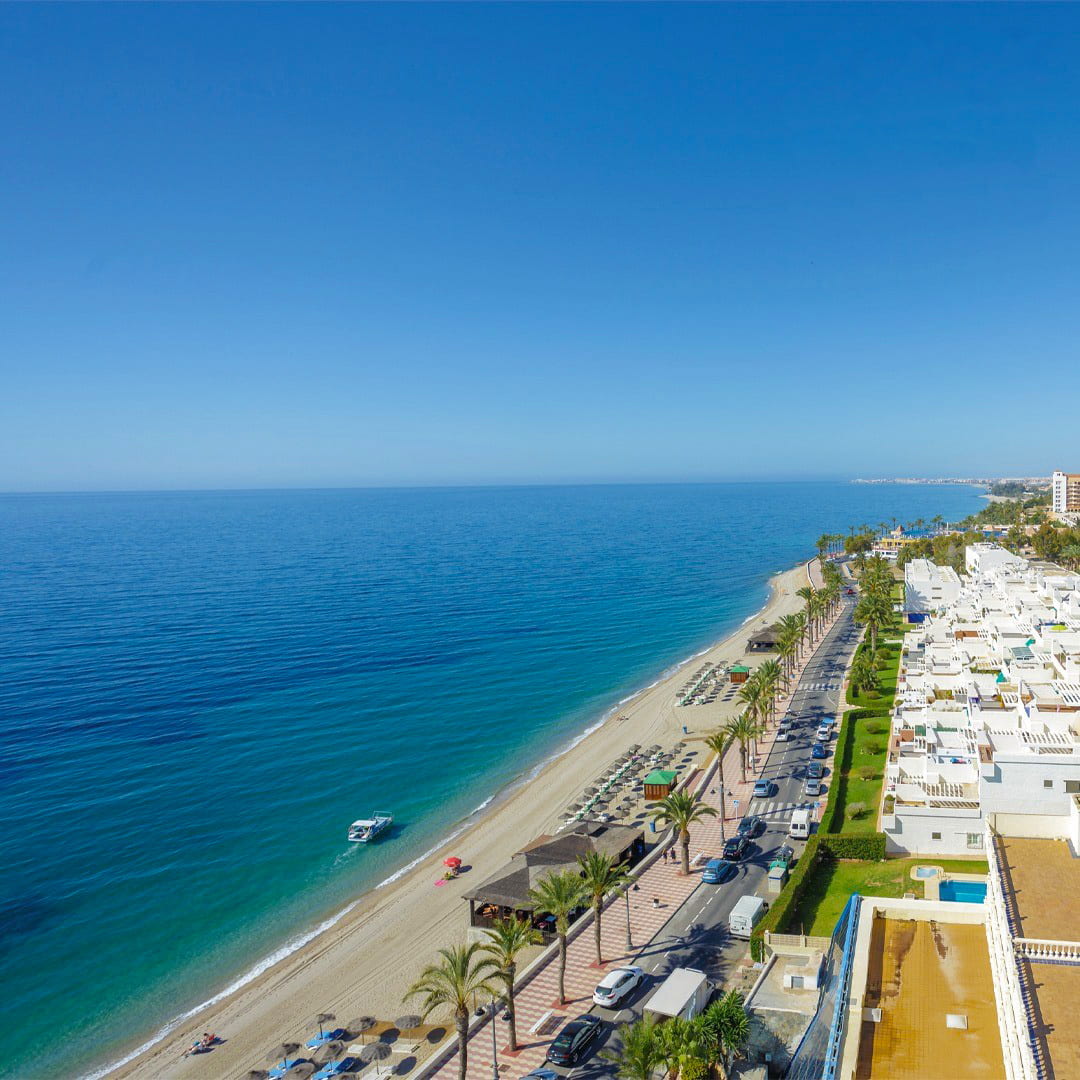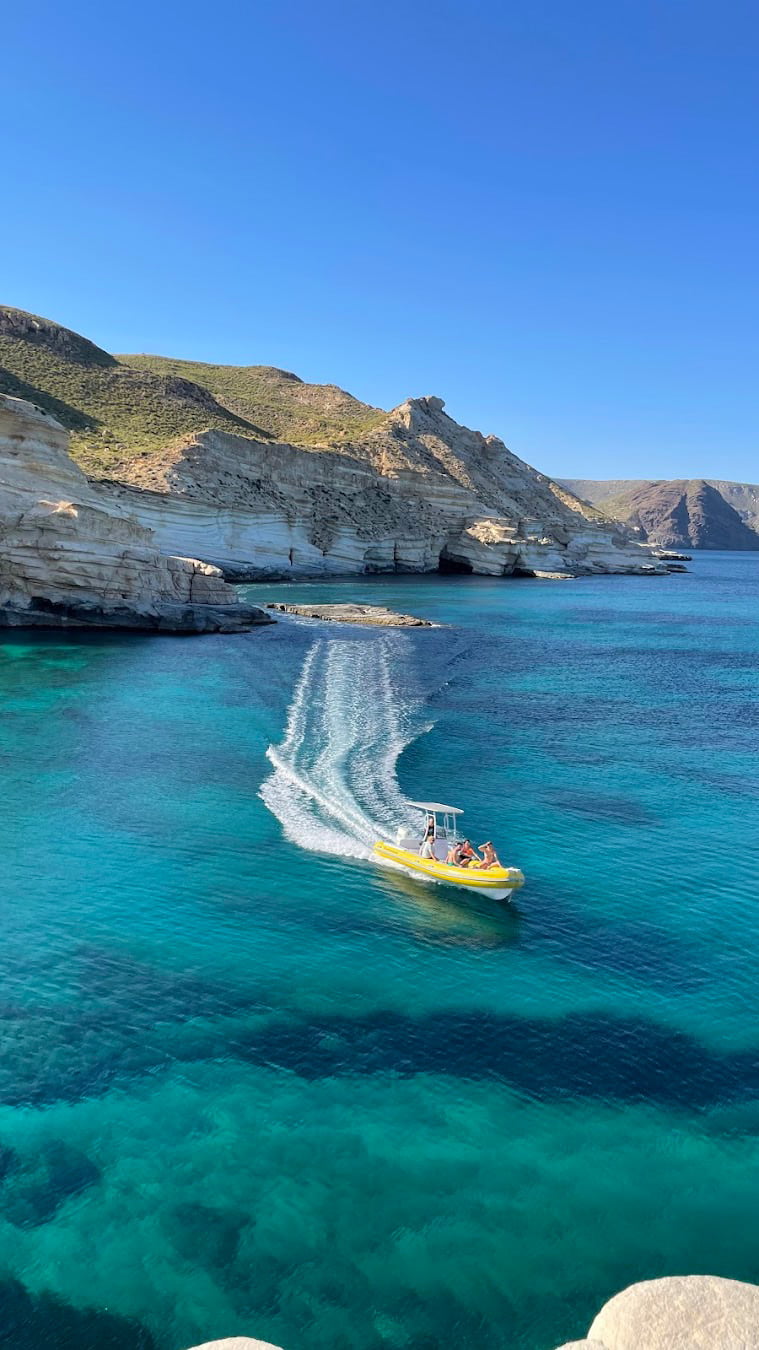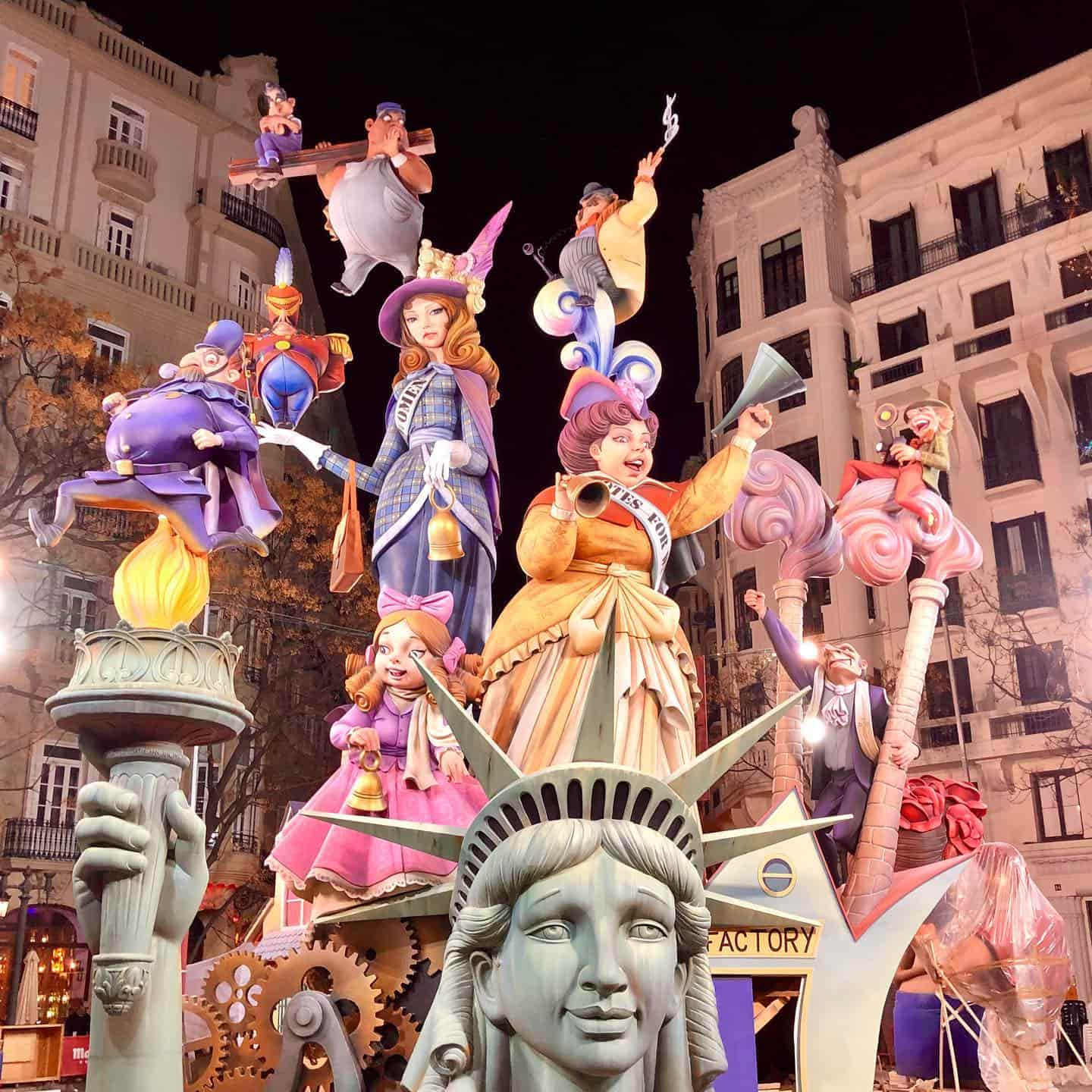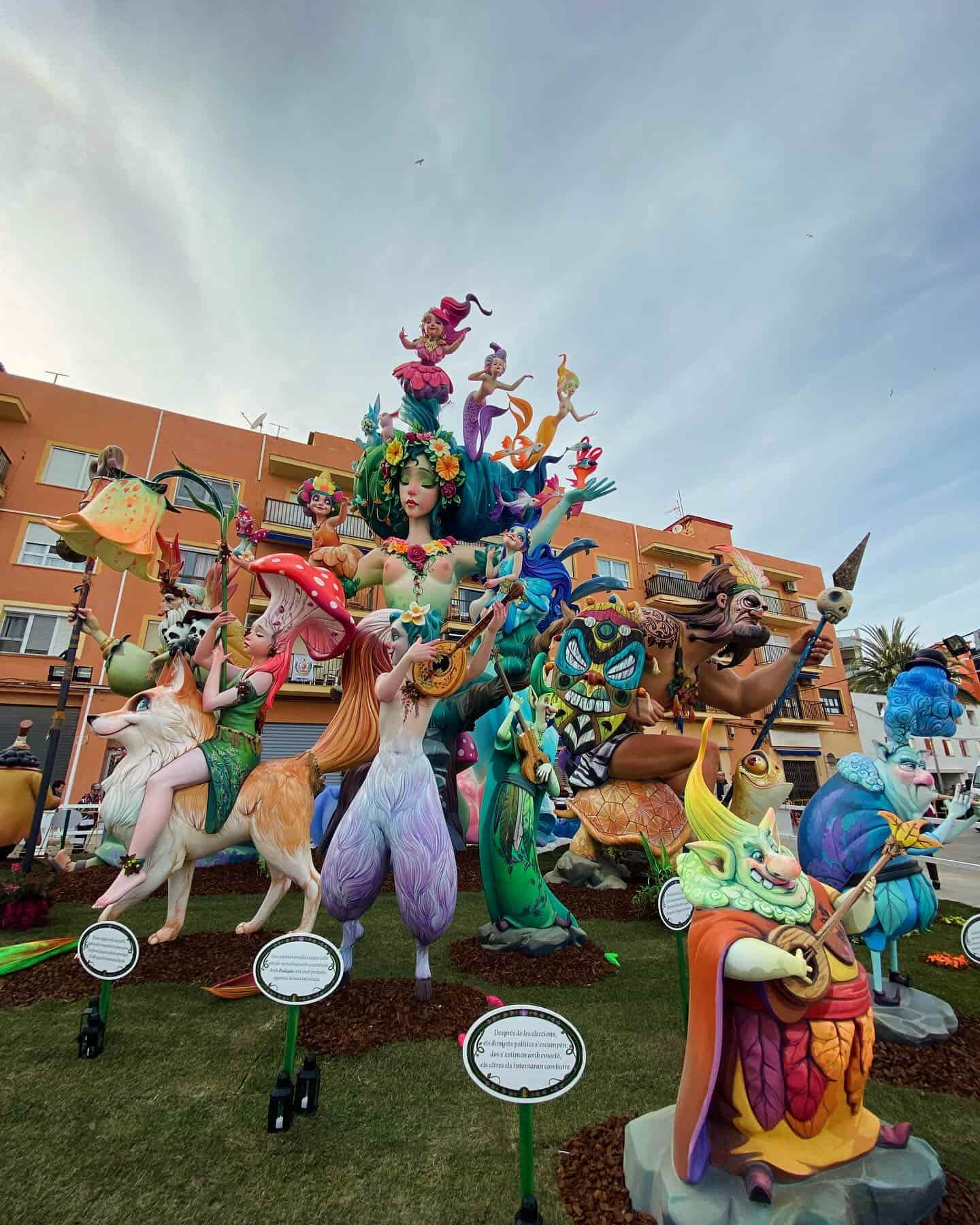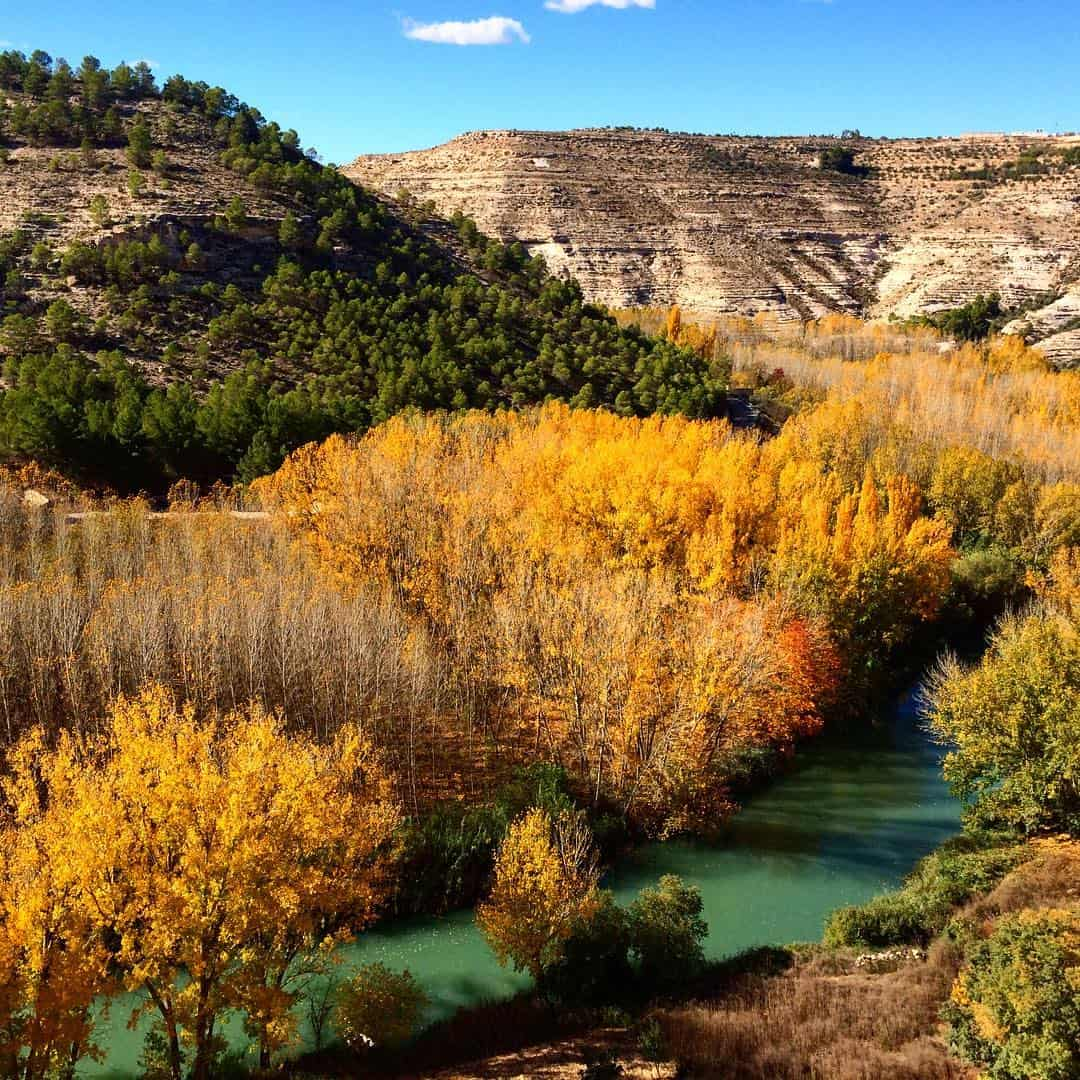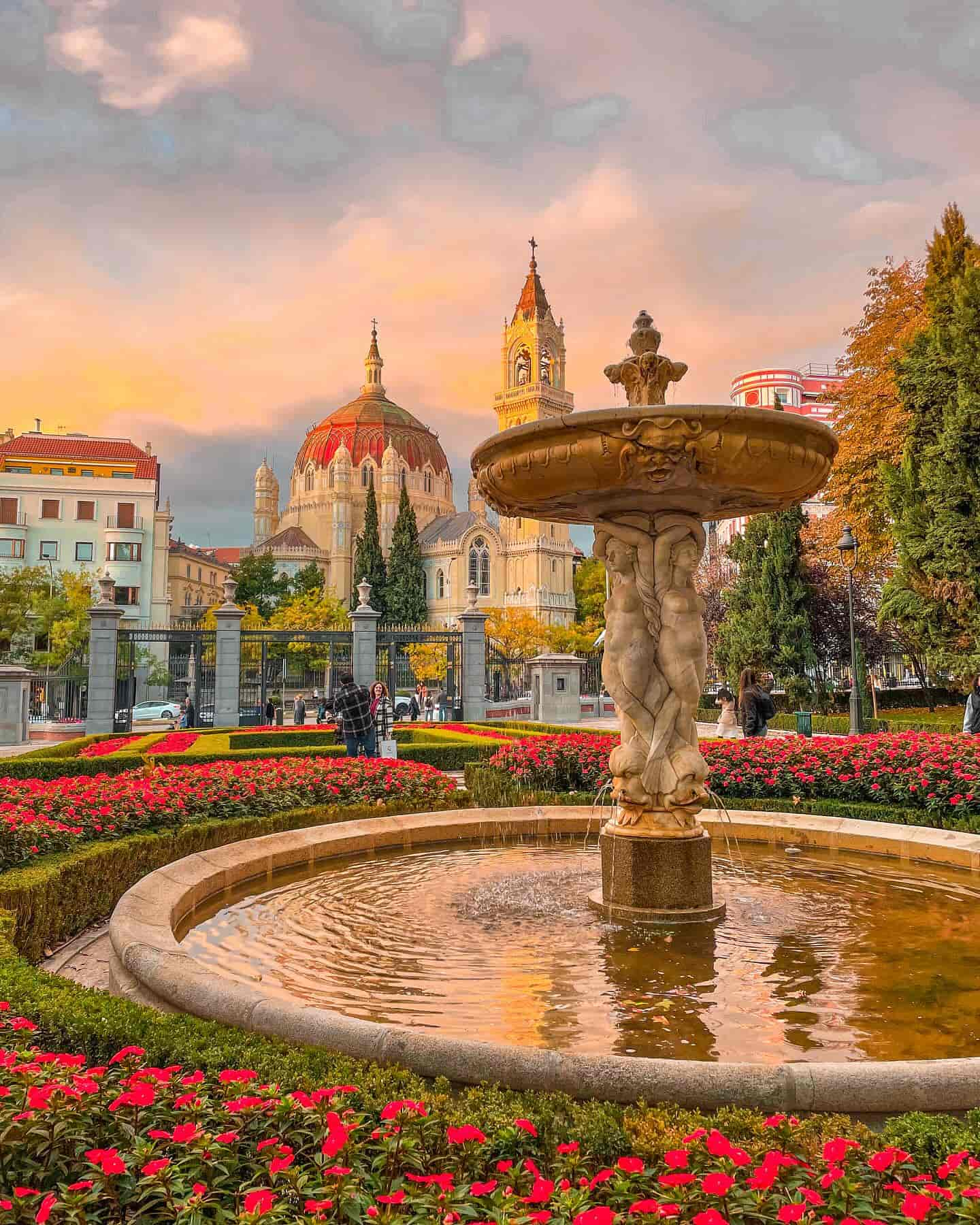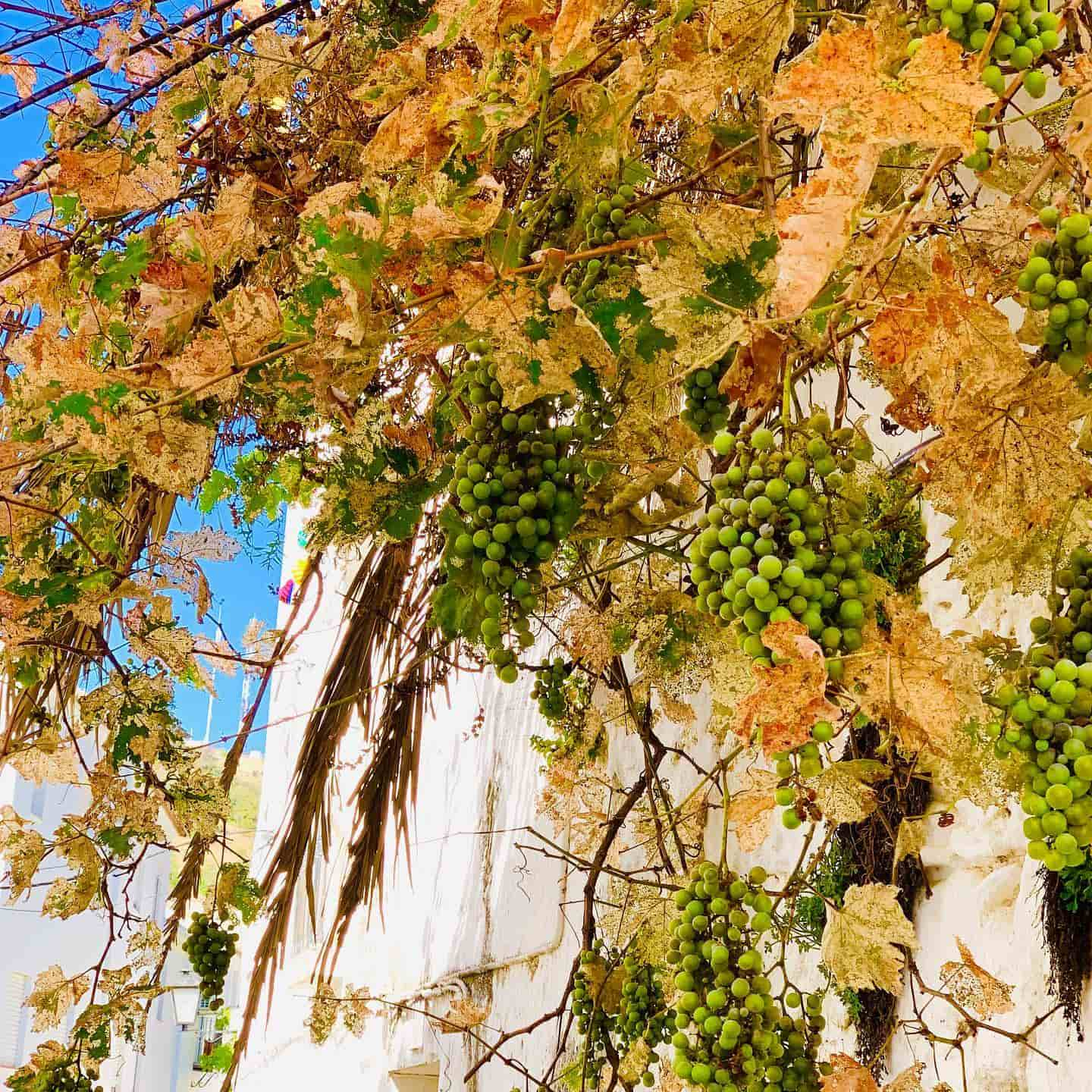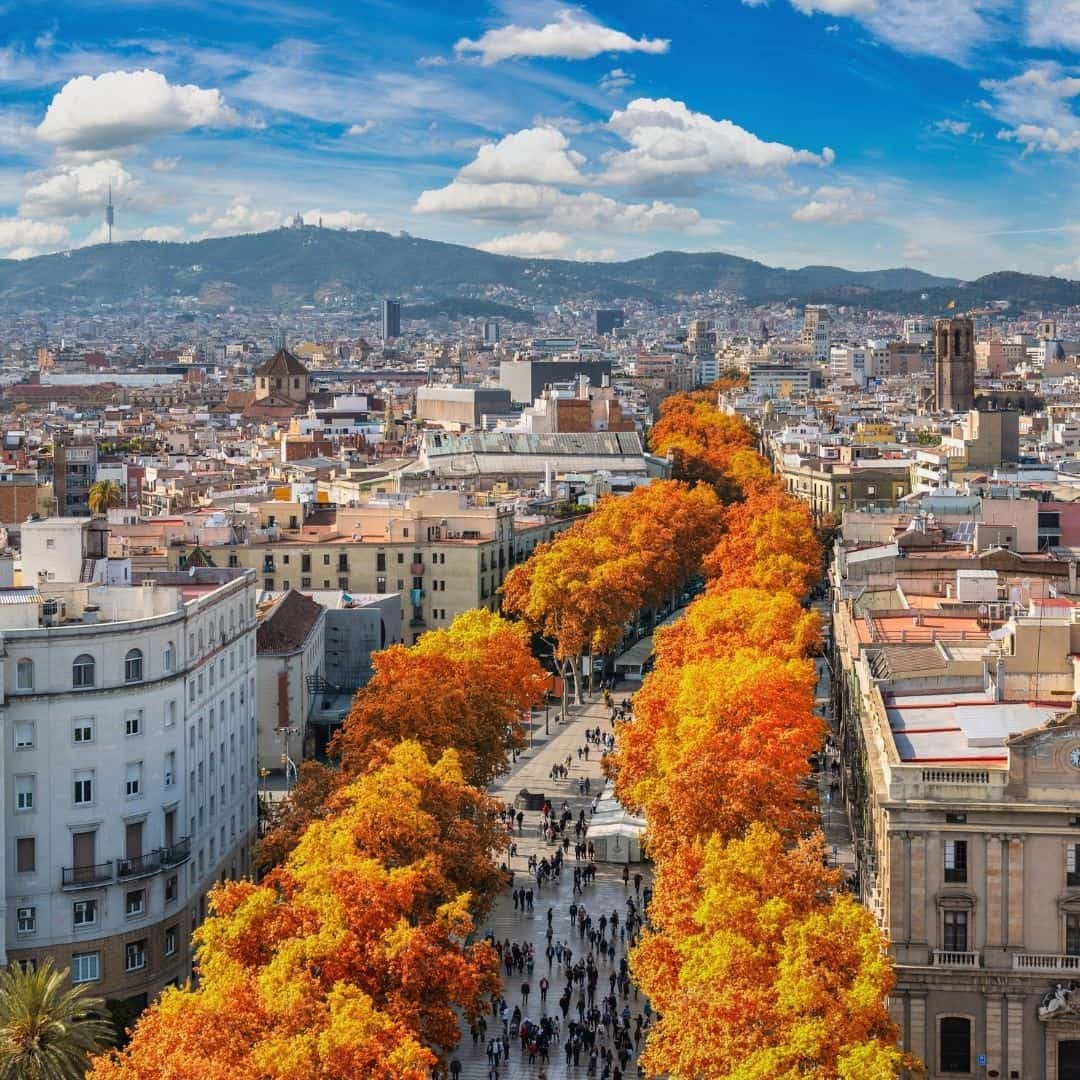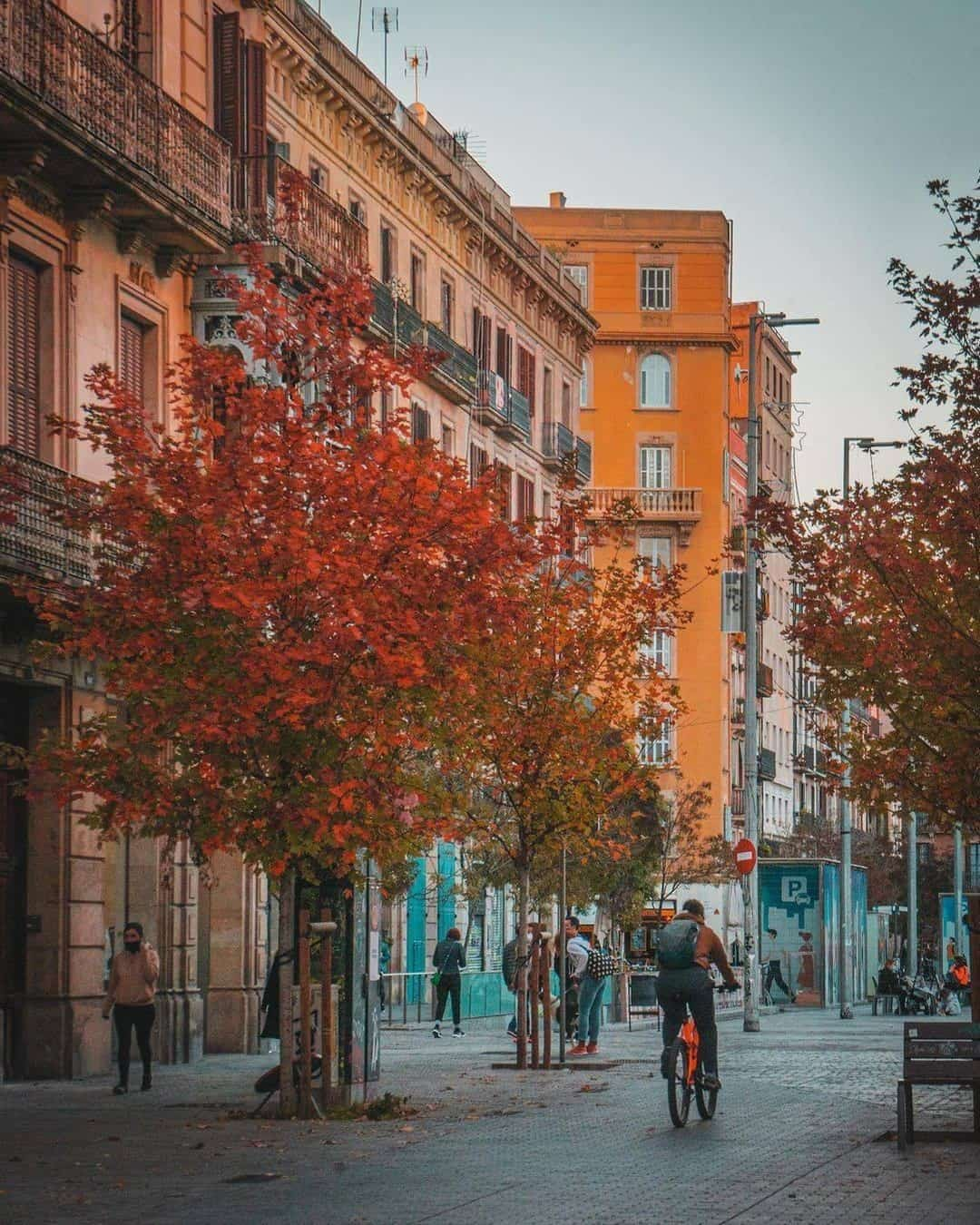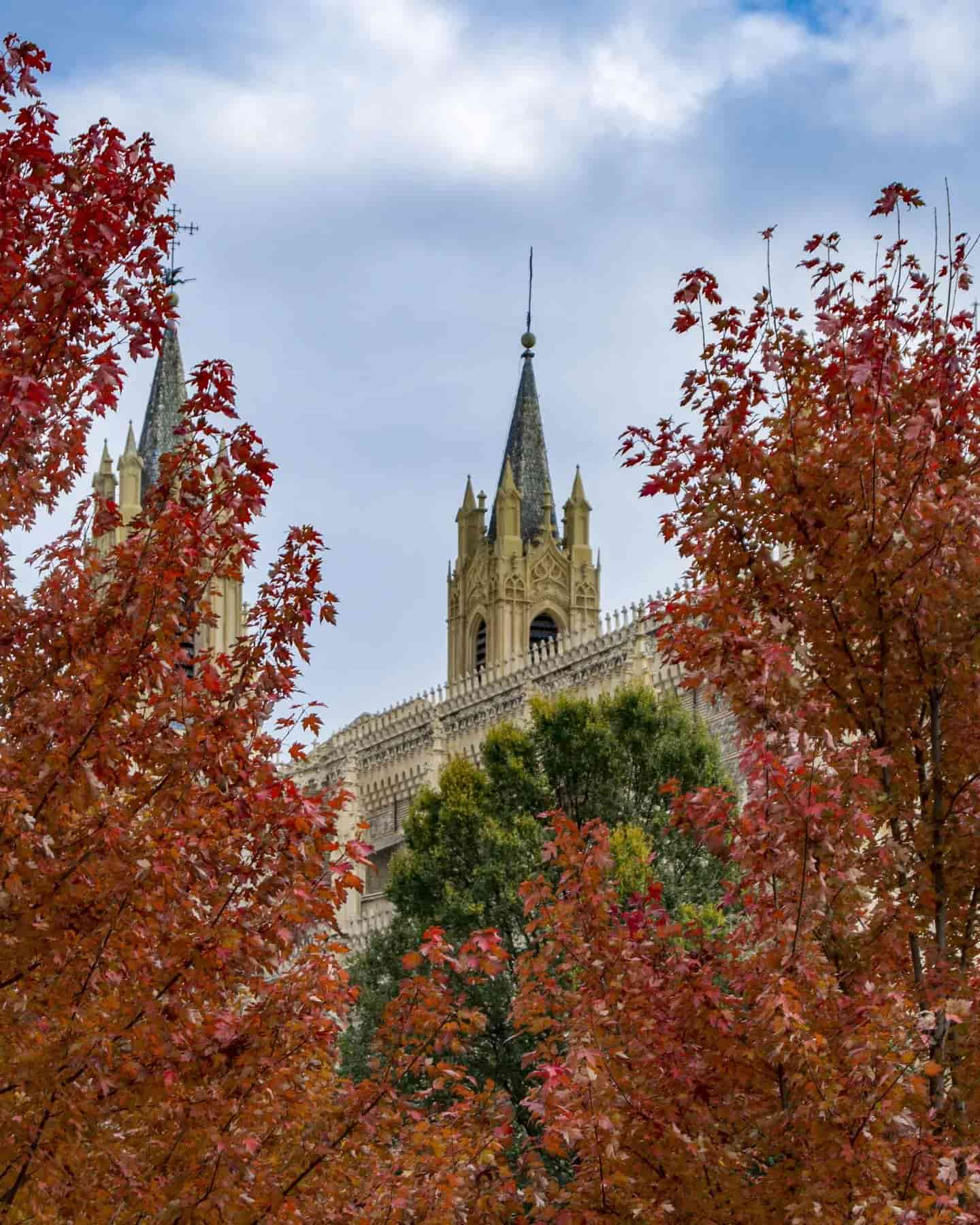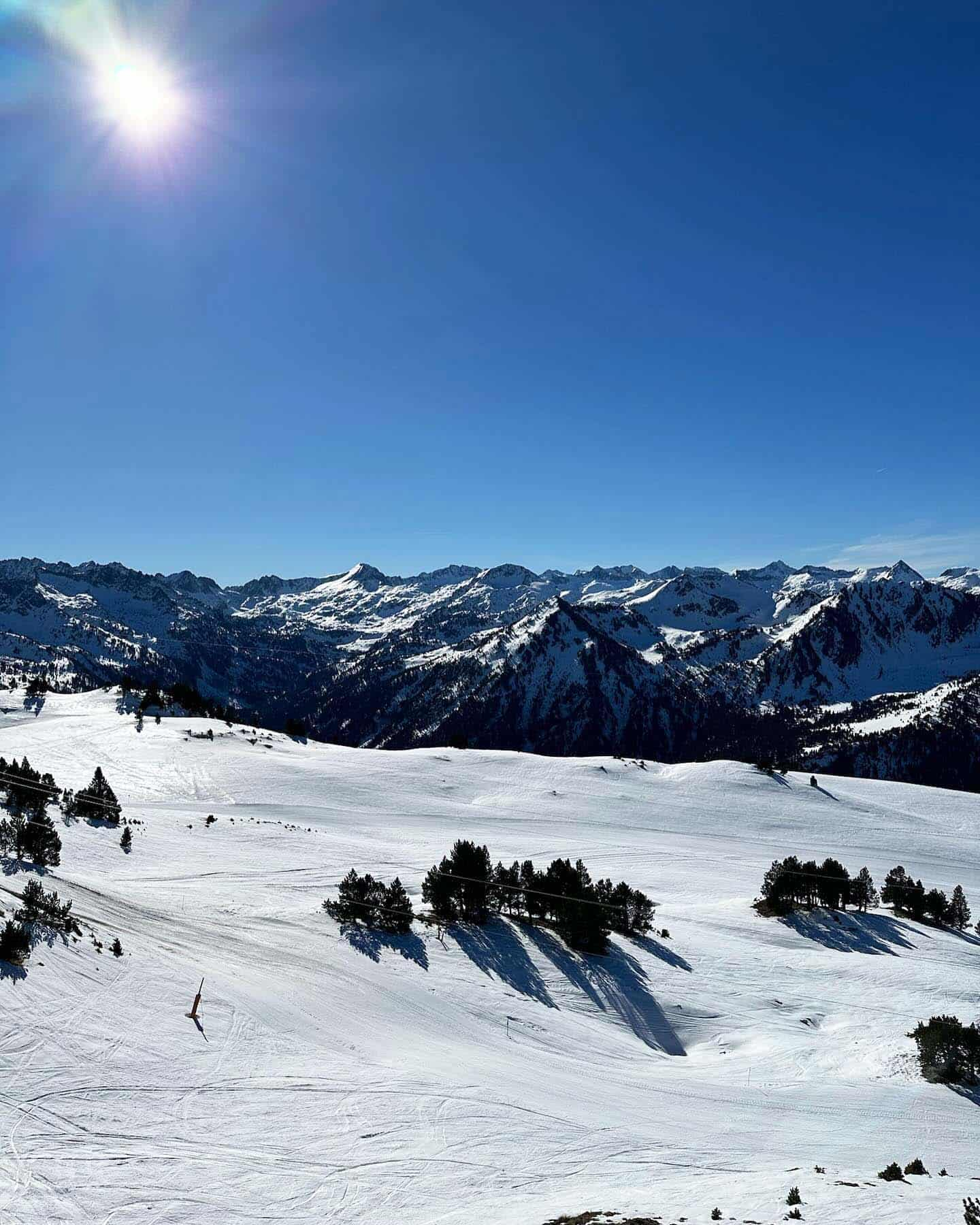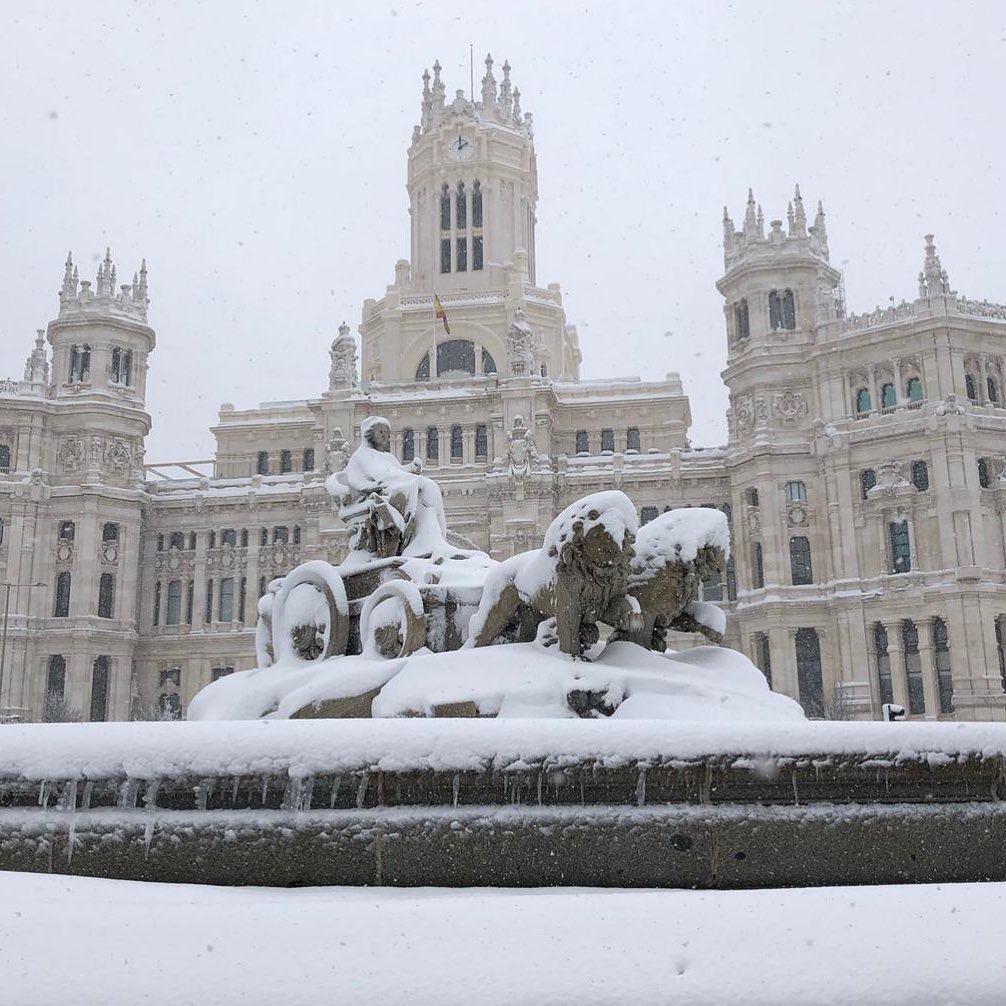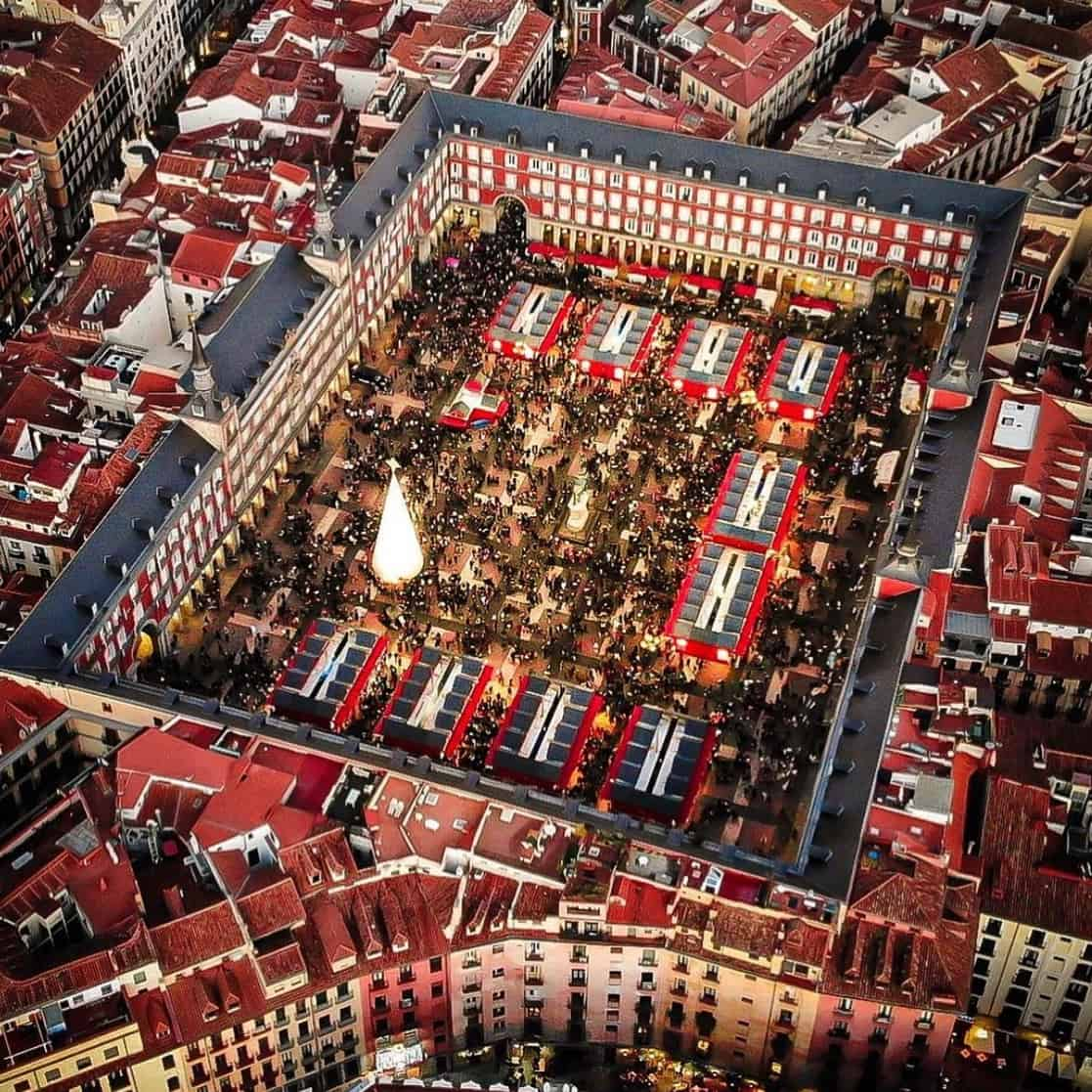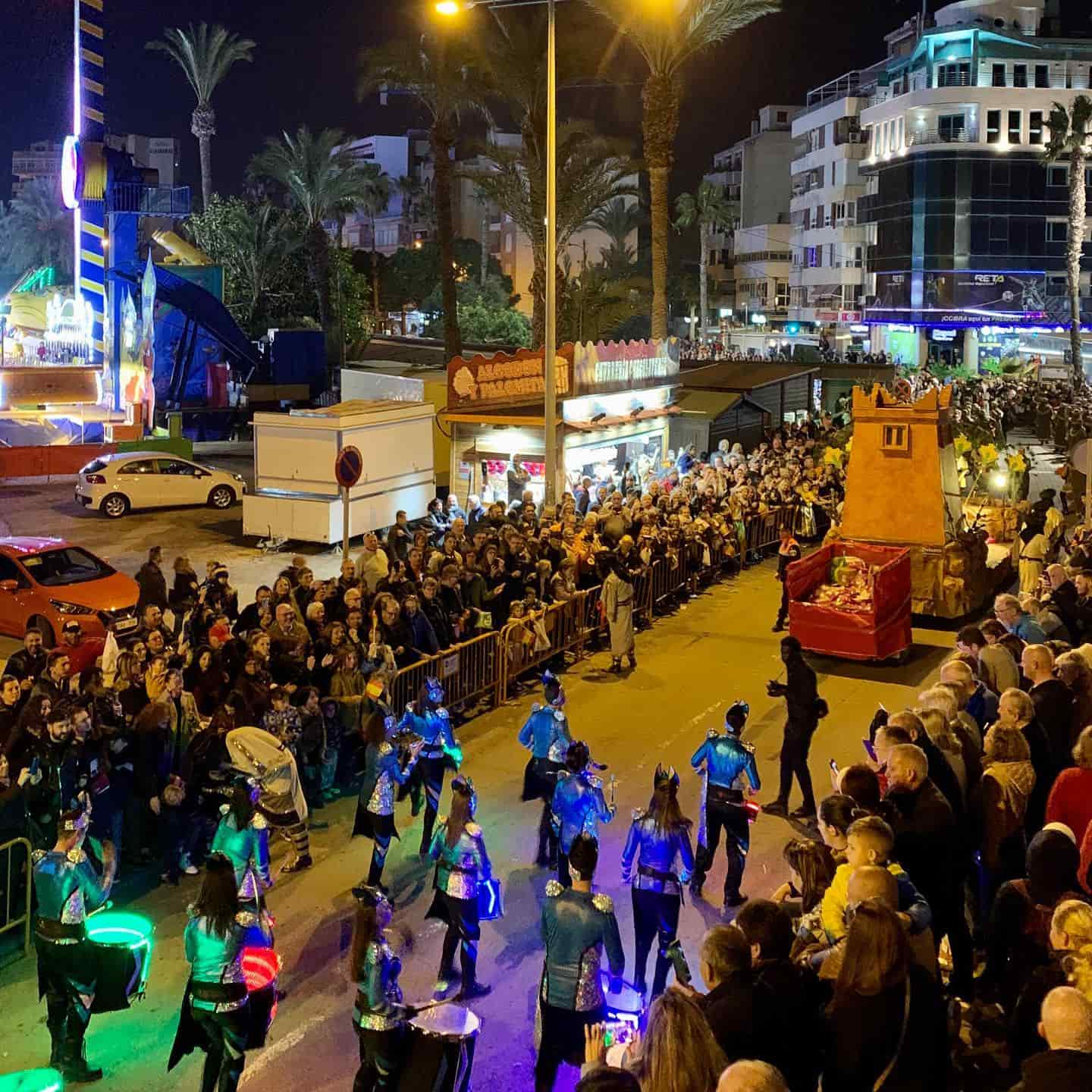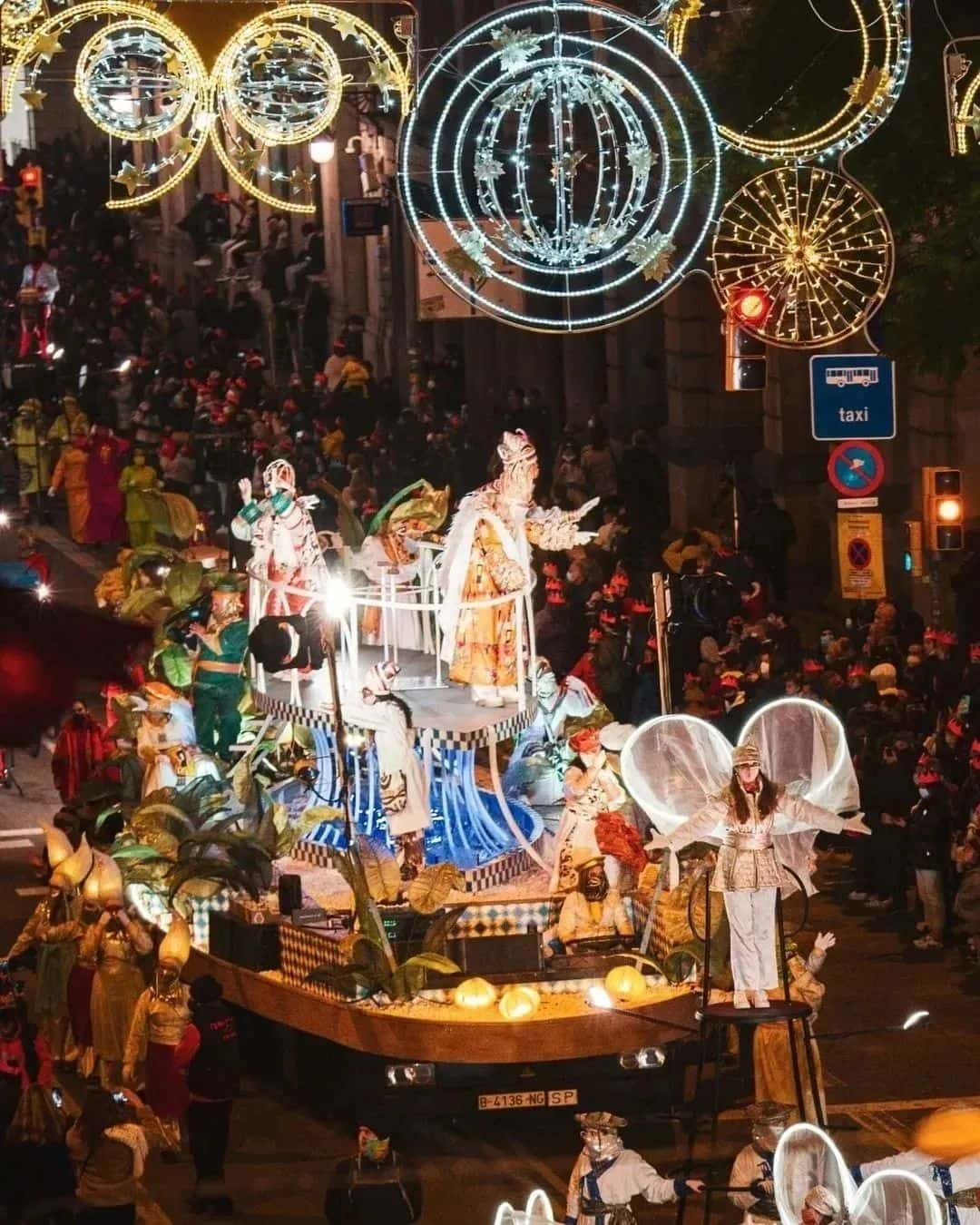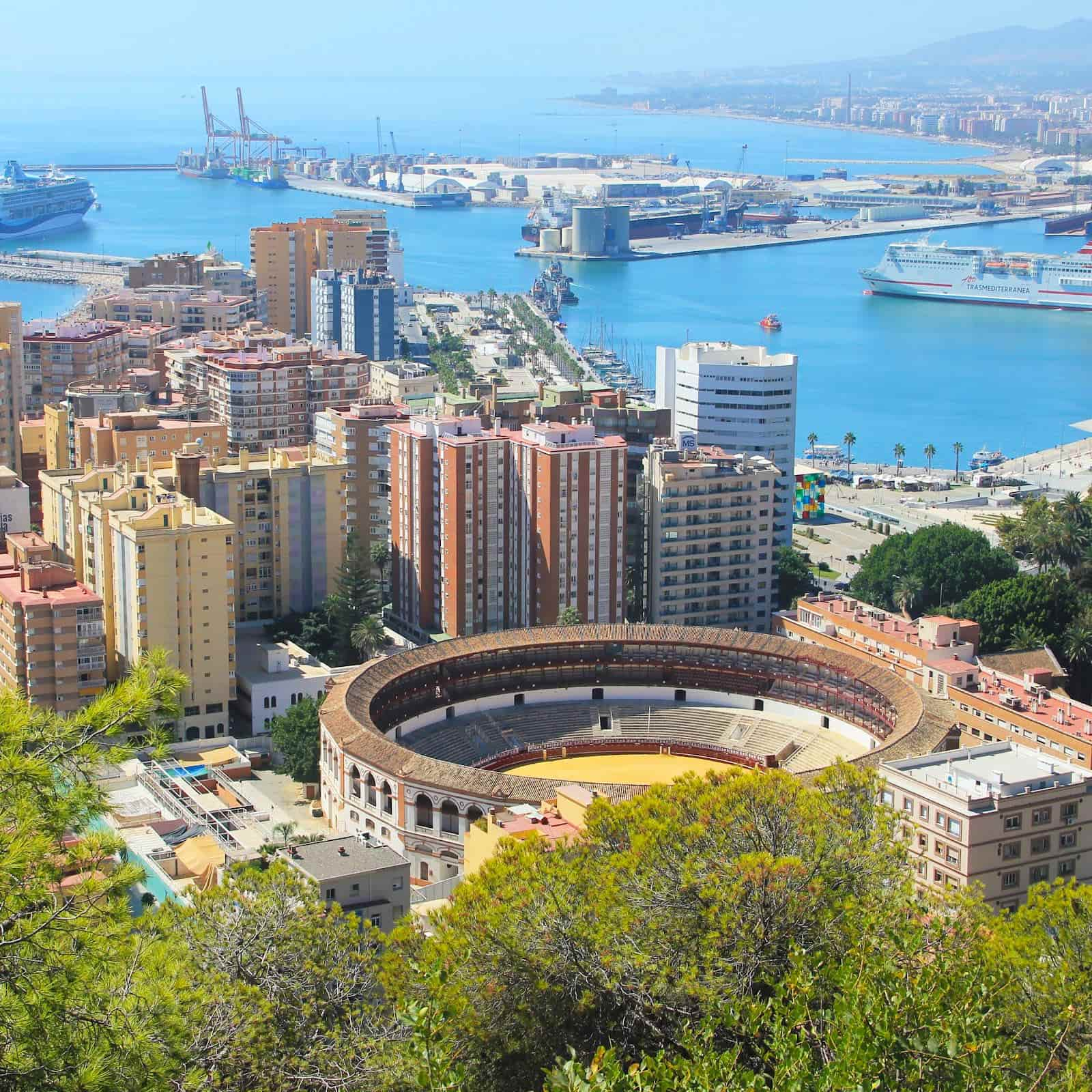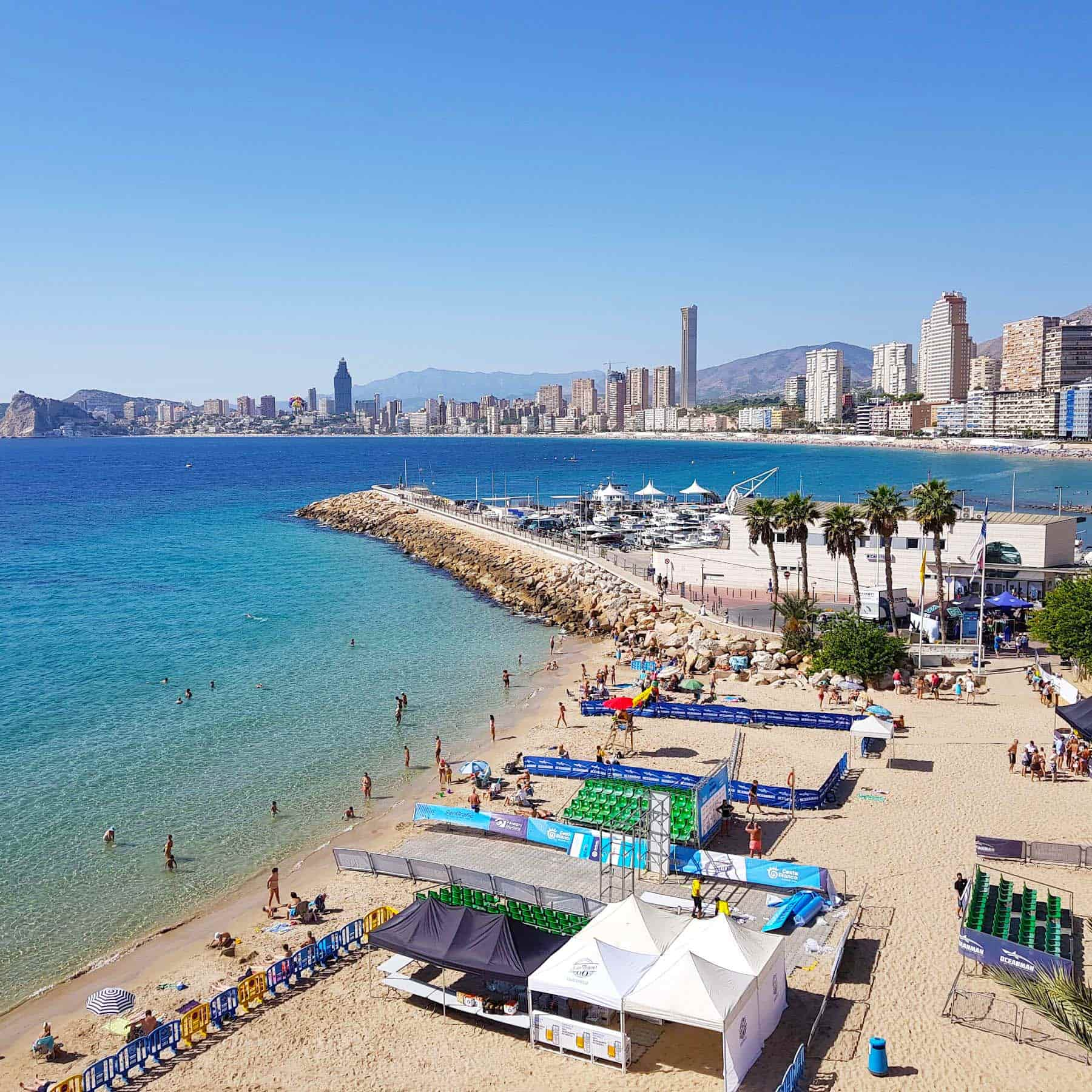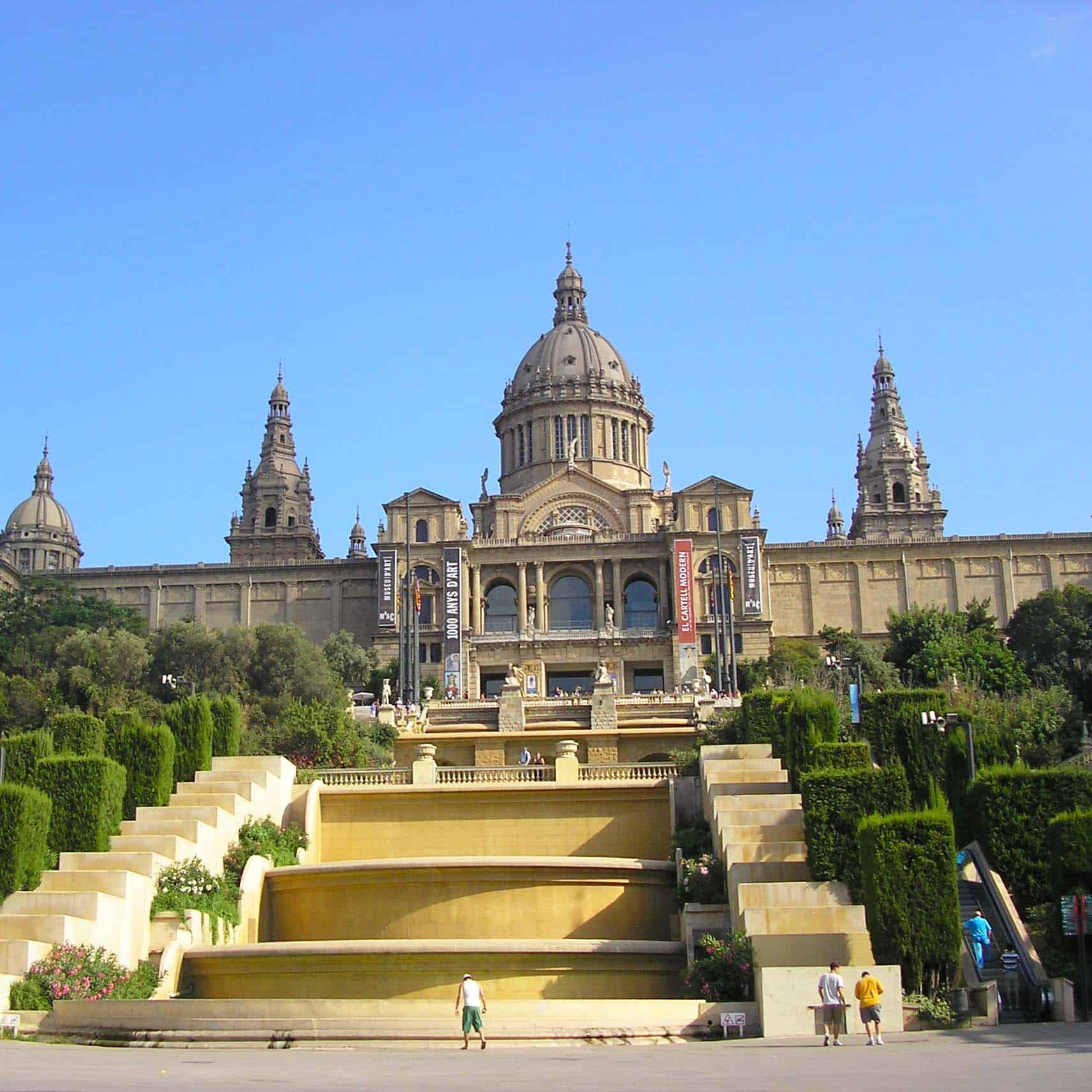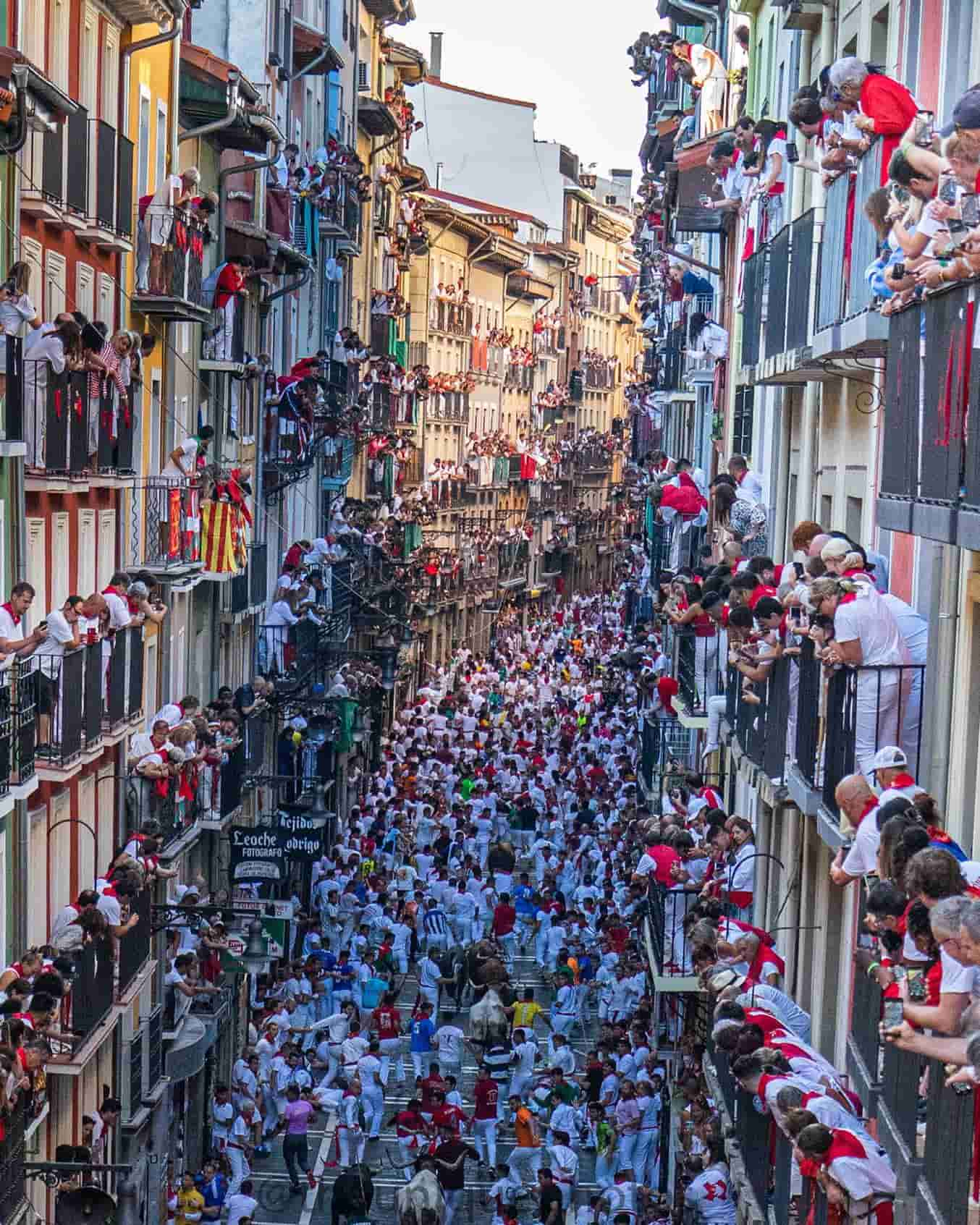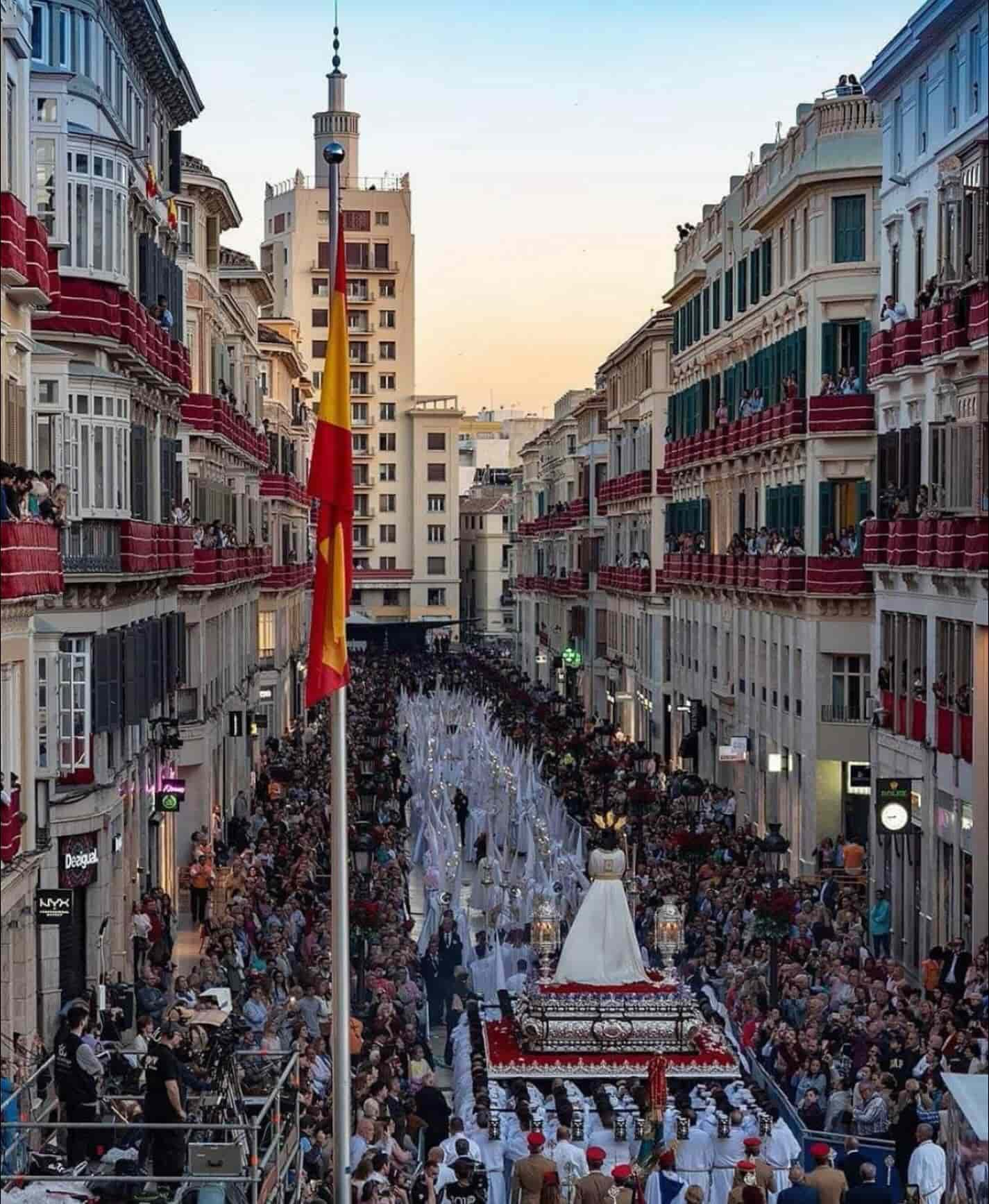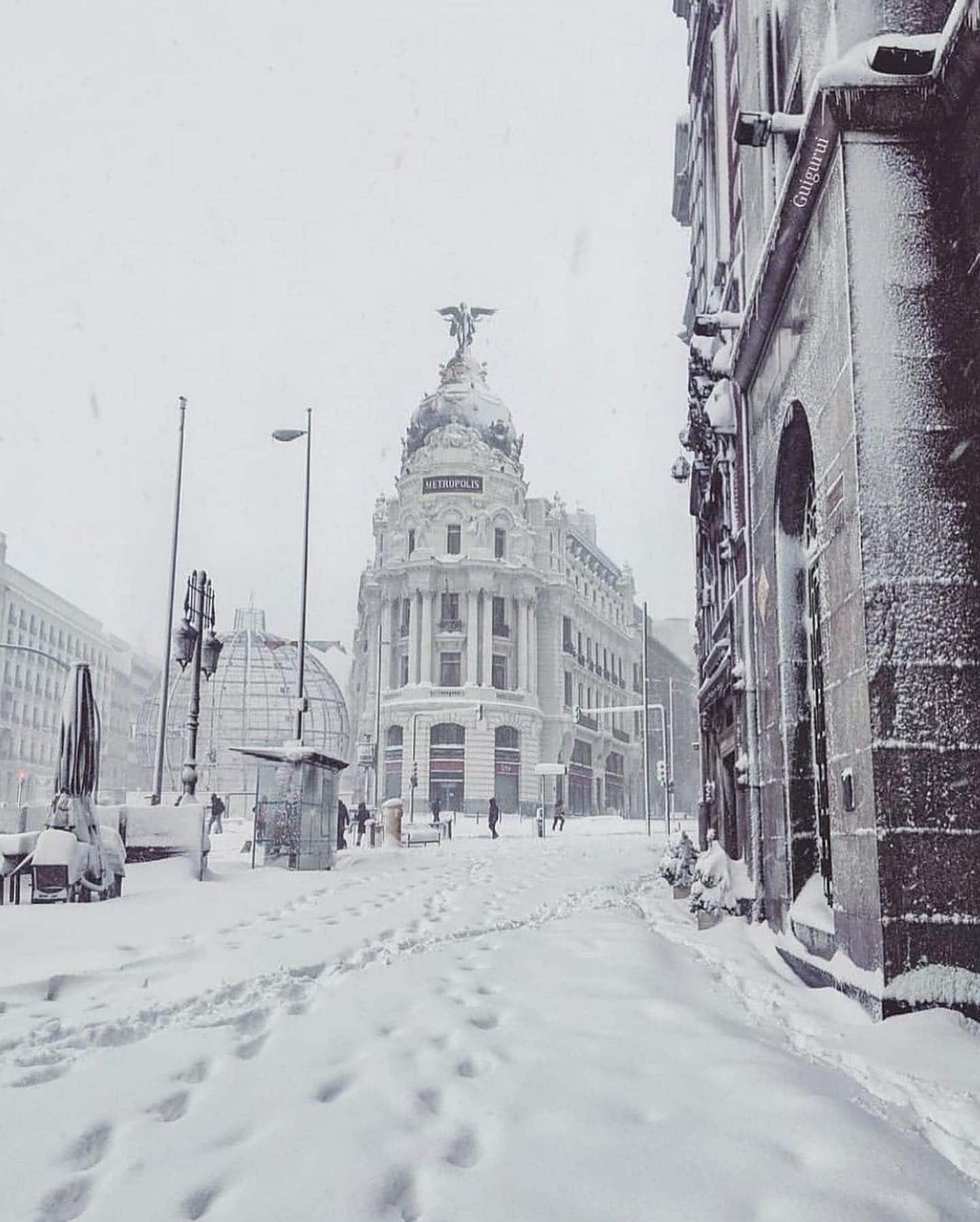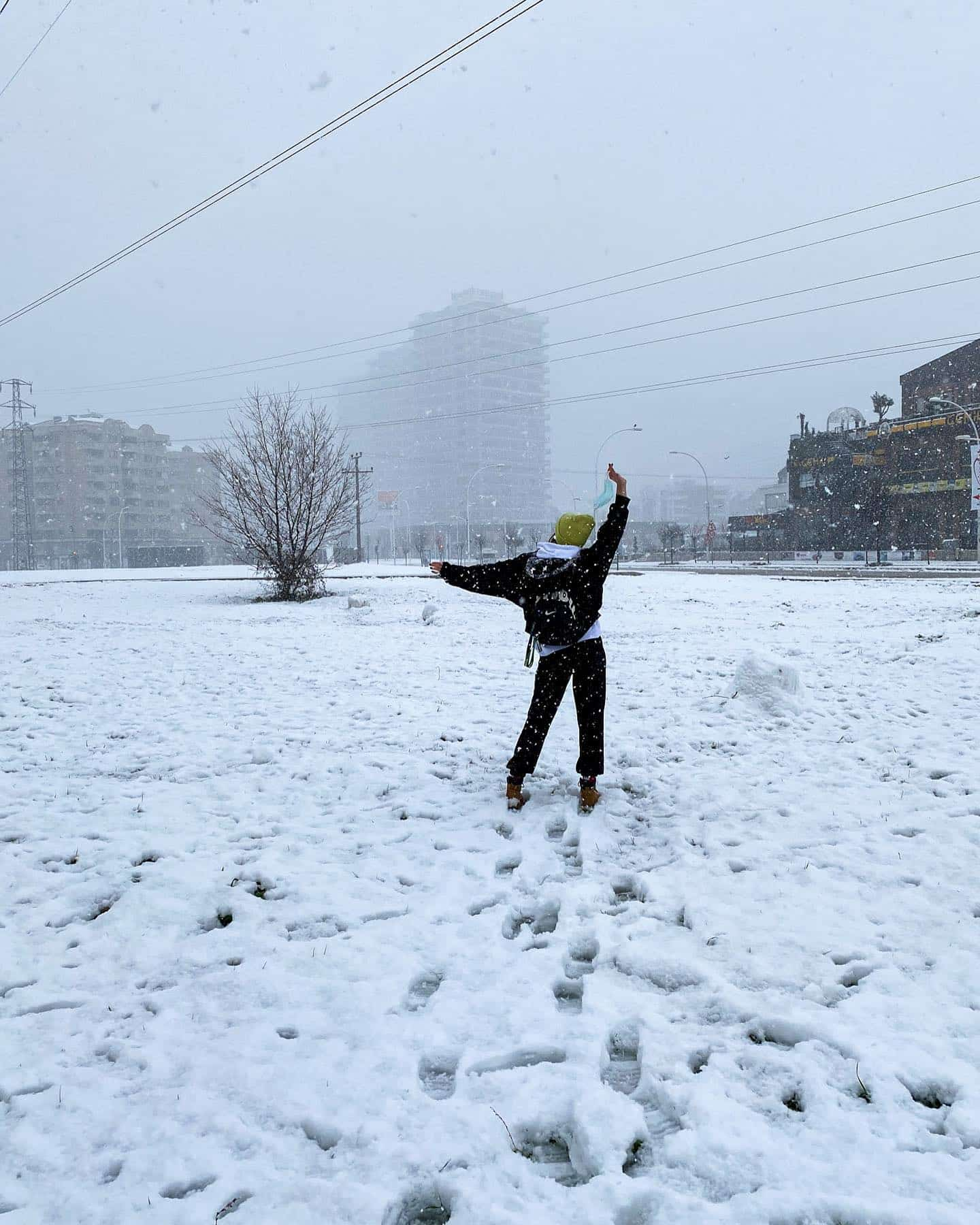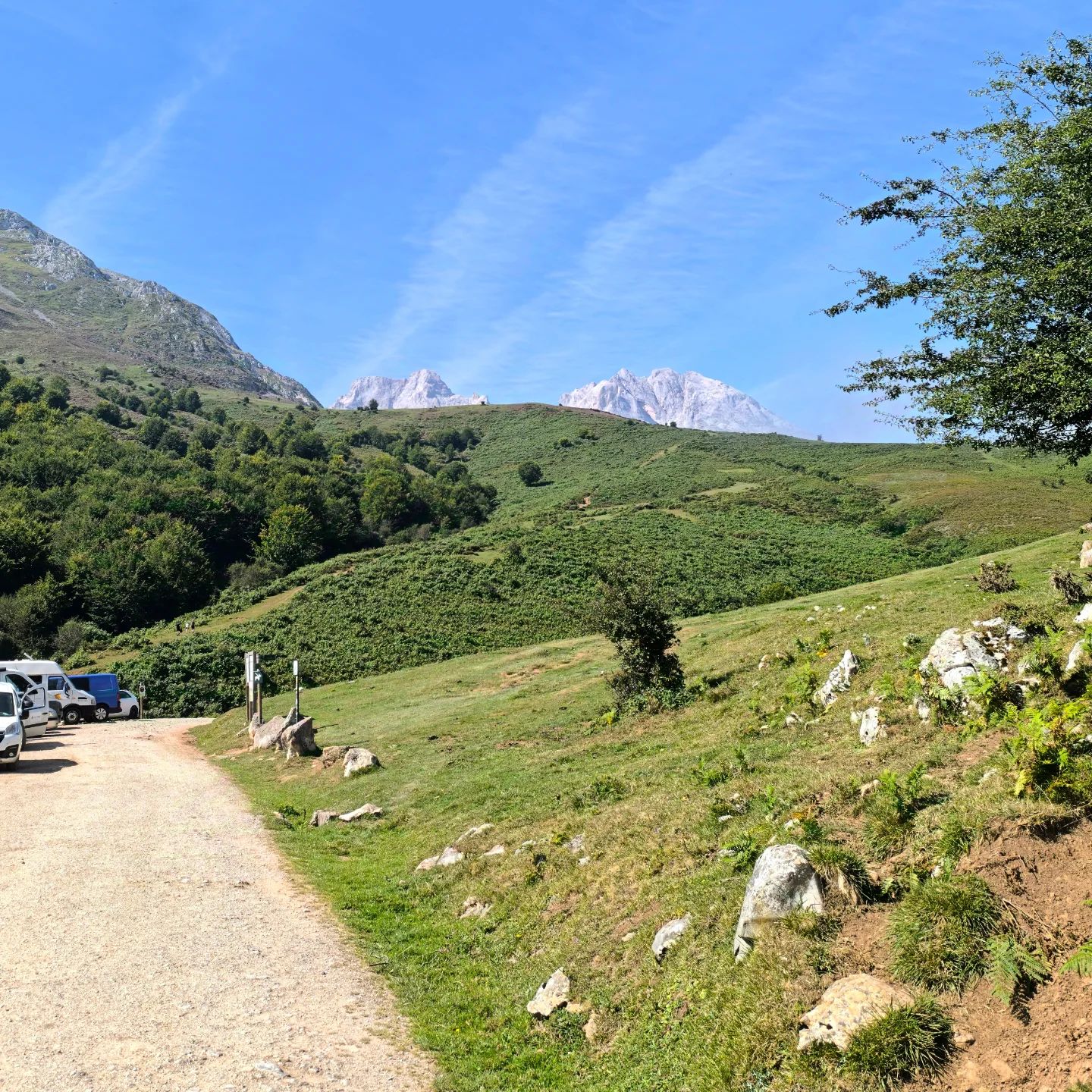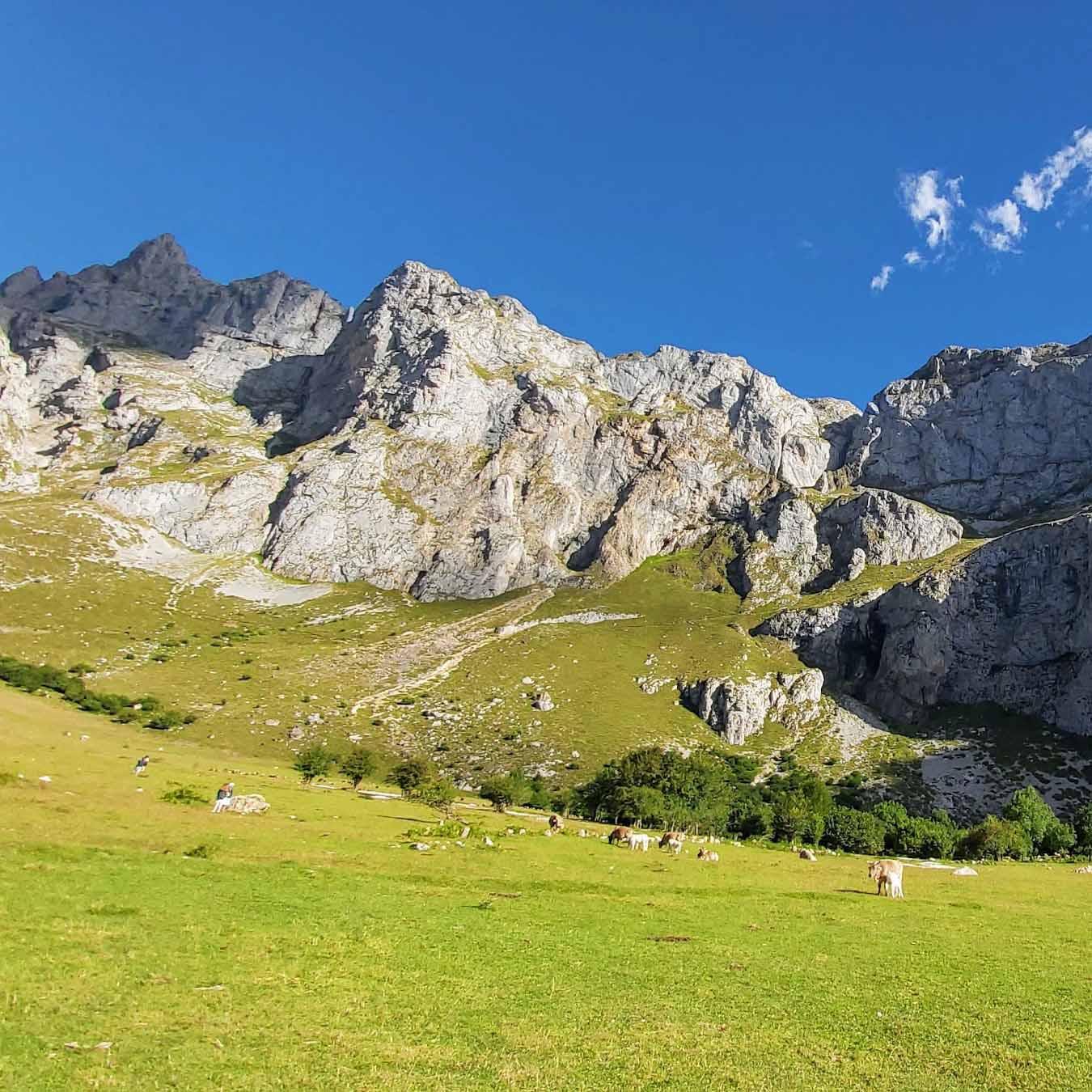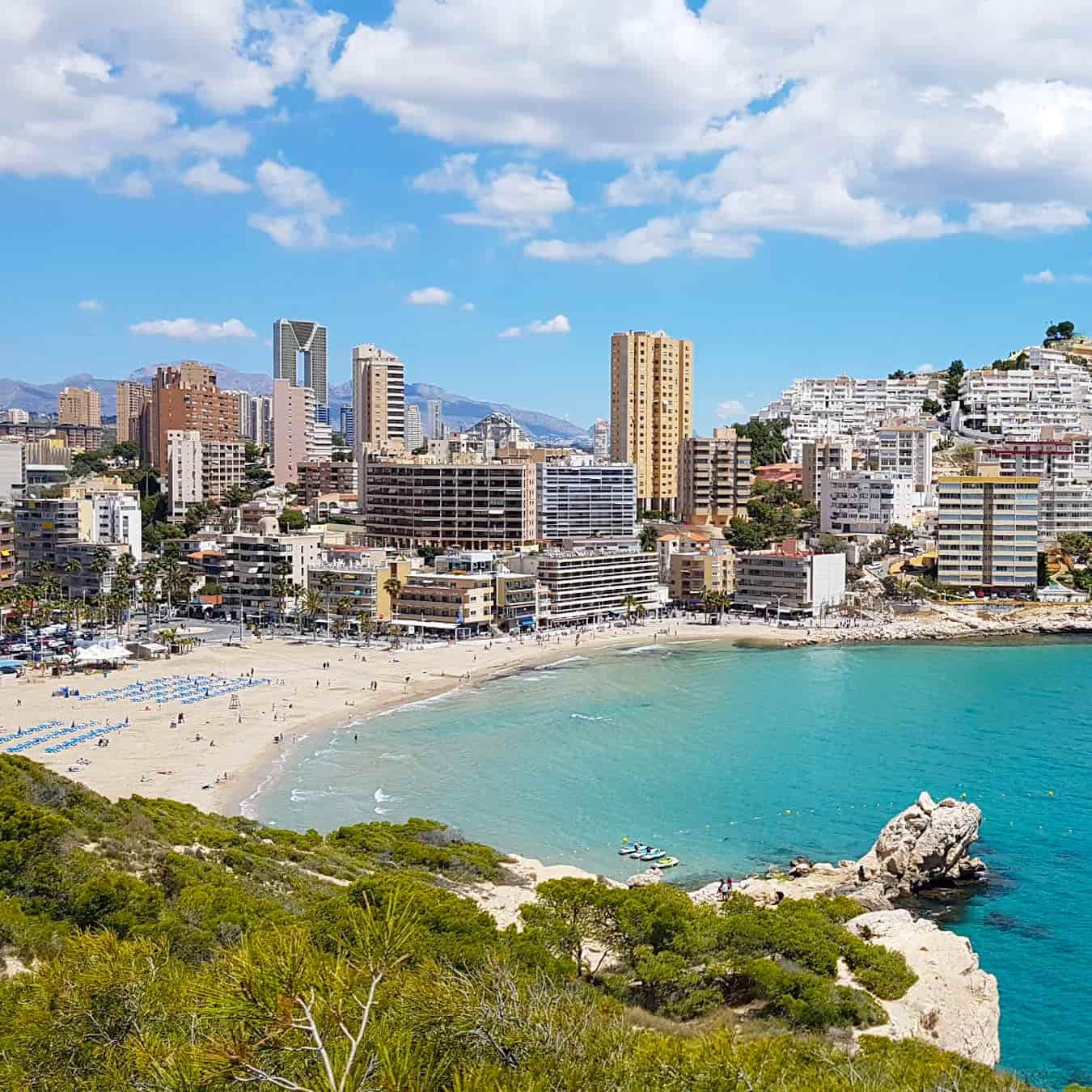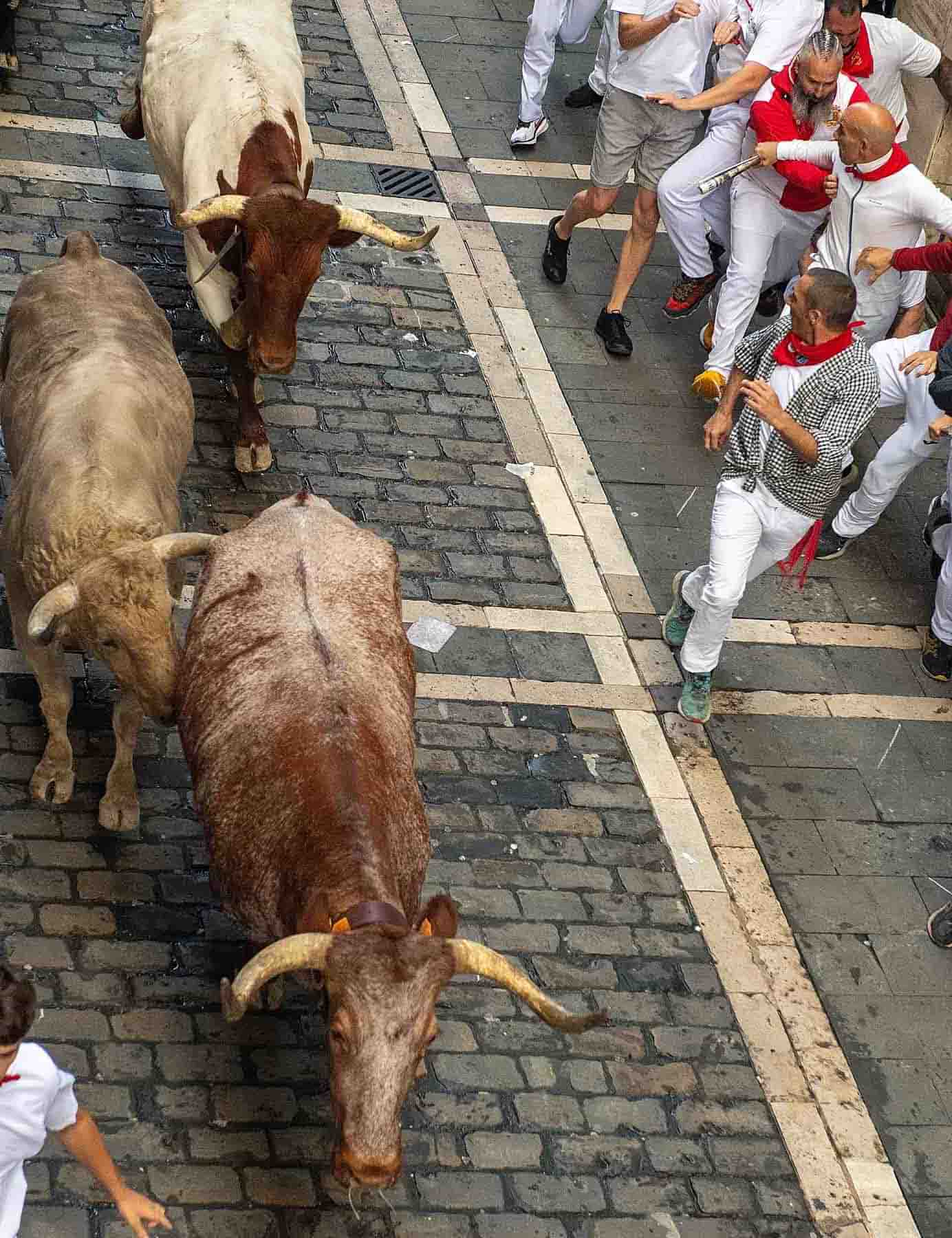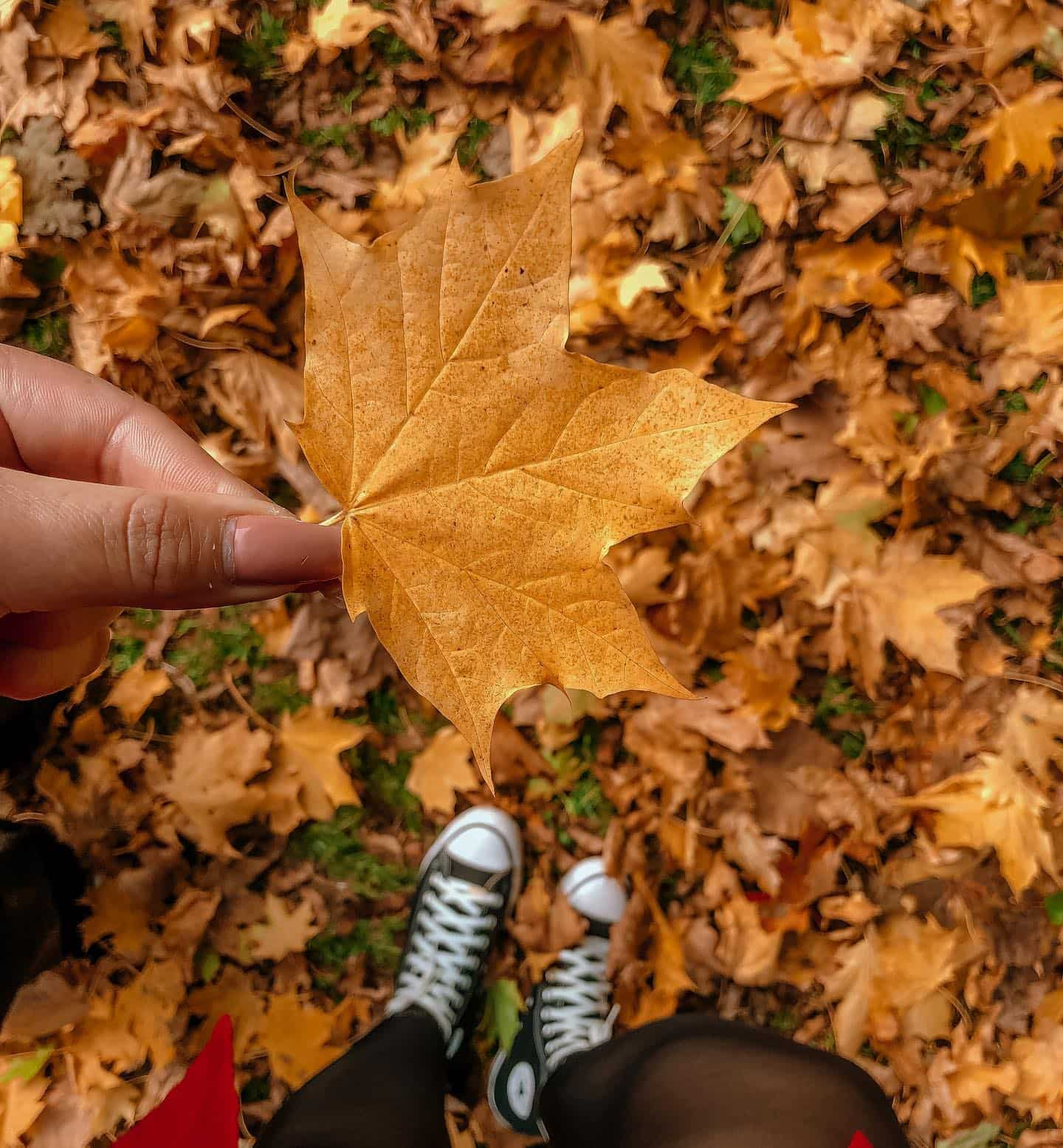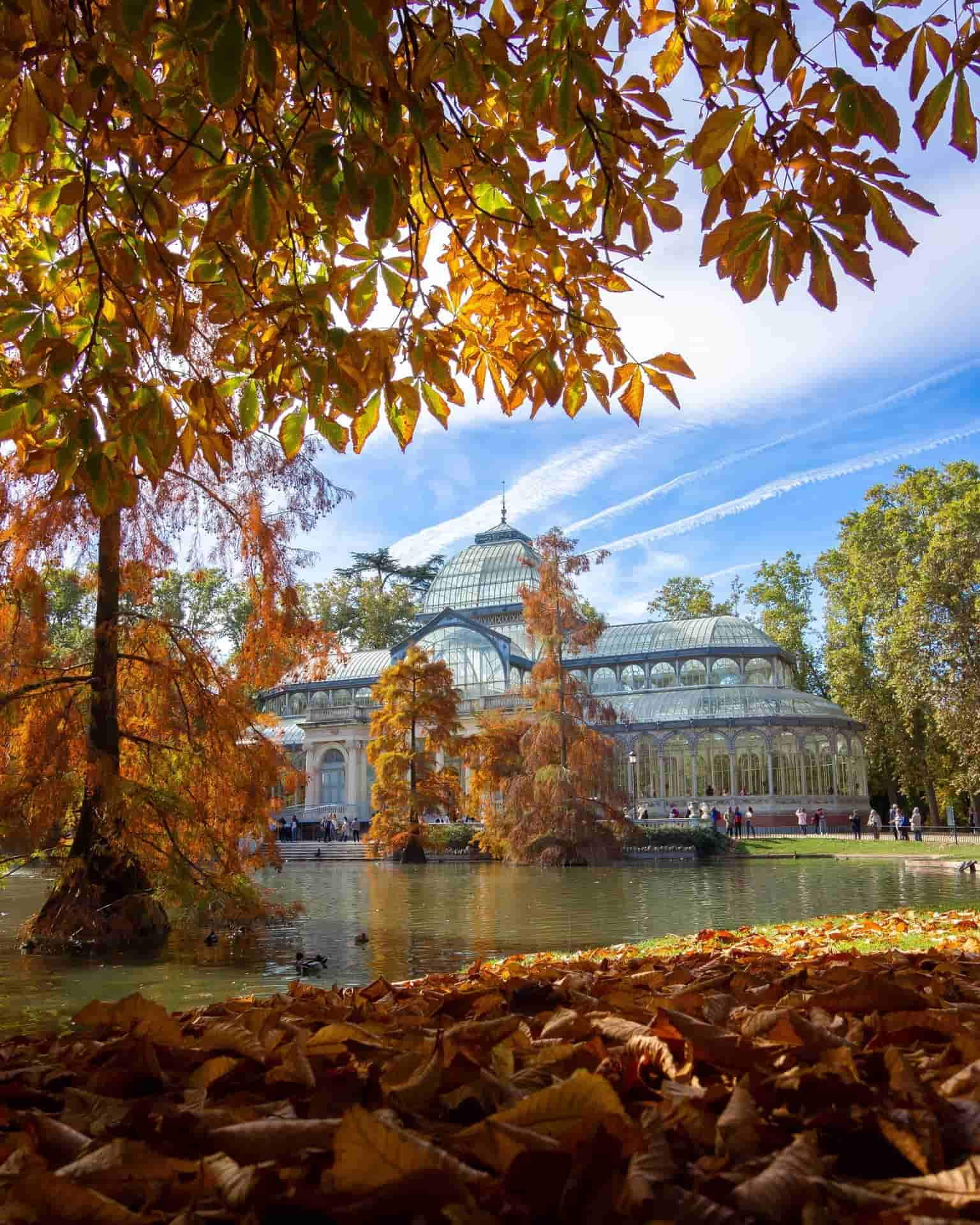Spain is a country of contrasts, where beaches coexist with mountains, and ancient traditions blend with modern life. In this guide, we’ll journey through Spain’s calendar, uncovering the hidden gems of each month and season. We’ll explore the best times for beach-hopping, city-breaking, and festival-chasing.
So whether you’re dreaming of basking on the Costa del Sol, exploring the winding streets of Barcelona, or dancing the night away at a local fiesta, stick with me. I’ll help you pinpoint the perfect time for your Spanish adventure. ¡Vamos!
1. Spain in Spring (March to May) – Best Time to Visit Spain for Pleasant Weather and Fewer Crowds 🌸
🌞 Sun-soaked paradise: Spring is a great time to visit Spain as the weather starts to warm up and the country comes alive. From May onwards, you can relax on the beach along the Costa del Sol or explore beautiful cities like Madrid and Barcelona. The warm weather is perfect for enjoying tapas and wine outdoors. Easter celebrations are particularly beautiful during this time.
📅 Spring perks: Here’s why I love spring in Spain:
- Comfortable temperatures (15-25°C)
- Longer daylight hours
- Blooming wildflowers and gardens
- Fewer tourists at major attractions
- Lower prices for accommodations and flights
💡 Booking tip: Book your Alhambra tickets in advance. Even in spring, this Moorish masterpiece gets busy!
🎉 Festival time: Spring is festival season in Spain. Dance at the Feria de Abril in Seville and watched the solemn processions of Semana Santa.
🍴 Seasonal eats: For food lovers, spring brings a bounty of fresh produce. I suggest trying these seasonal delights:
- Espárragos (asparagus)
- Alcachofas (artichokes)
- Habas (broad beans)
- Cordero lechal (spring lamb)
🌺 Spring destinations: In terms of destinations, I’m partial to Andalusia in spring. The weather is mild, and the orange blossoms perfume the air. Barcelona and Madrid are also fantastic, with fewer crowds than in summer.
2. Spain in Summer (June to August) – Busiest Time with Hot Weather and Lively Atmosphere ☀️
🌡️ Heat wave: Summer in Spain is hot, especially in inland cities like Madrid and Seville.
🏖️ Beach paradise: From the Costa del Sol to the Costa Brava, beaches are bustling with activity. Spend lazy days on the golden sands of Mallorca or taking refreshing dips in the crystal-clear waters of Menorca.
Here’s a quick rundown of some of Spain’s best beaches:
- La Concha, San Sebastian
- Playa de Ses Illetes, Formentera
- Playa de Bolonia, Cadiz
- Cala Macarella, Menorca
- Playa del Silencio, Asturias
🎭 Festival frenzy: Enjoy the Benicàssim music festival and marvel at the human towers during Tarragona’s Santa Tecla festival.
🍹 Nightlife buzz: Spanish cities come alive at night during summer. The streets of Barcelona and Madrid are filled with people enjoying tapas and drinks well into the early hours. It’s the perfect time to experience Spain’s famous nightlife!
⚠️ Crowd alert: Remember, this is peak tourist season. Popular attractions like the Sagrada Familia in Barcelona or the Alhambra in Granada can get incredibly busy. Book tickets in advance and be prepared for crowds.
💡 Insider tip: To beat the heat, take a siesta during the hottest part of the day and enjoy the cooler evenings. Many restaurants don’t open for dinner until 9 pm or later!
🍽️ Summer eats: Don’t miss out on seasonal Spanish delights like gazpacho, a cold tomato soup perfect for hot days, or refreshing tinto de verano, a lighter version of sangria.
3. Fall in Spain (September to October) – Perfect Time to Stay in Spain for Mild Weather and Cultural Experiences 🍂
🍂 Autumn magic: Fall in Spain (September to October) is the perfect time to visit if you want to enjoy mild weather and rich cultural experiences. The weather is warm enough to spend time outside without the scorching temperatures of summer. It’s an ideal season to visit places like Madrid, Barcelona, and the northern coast of Spain. The south of Spain still offers great weather for those seeking warmer climes.
📅 Autumn perks: Here’s why autumn is one of the best times to visit Spain:
- Perfect weather: Mild temperatures across Spain make it comfortable for sightseeing and outdoor activities.
- Fewer crowds: With the summer rush over, you can enjoy popular attractions without the hustle and bustle.
- Cultural events: Many regions host festivals and events during this time, offering a glimpse into Spanish traditions.
- Natural beauty: The changing colors of fall add a picturesque backdrop to your travels.
🏙️ Top destinations: Some of the best places to visit during this time include:
- Barcelona: Enjoy the city’s architecture and beaches without the summer crowds.
- Madrid: Explore the capital’s museums and parks in pleasant weather.
- San Sebastian: Experience the famous film festival and enjoy the city’s renowned cuisine.
- La Rioja: Participate in wine harvest festivals and taste some of Spain’s best wines.
🍇 Autumn experiences: While spring events like Semana Santa and Feria de Abril are over, autumn offers its own unique experiences. October is the perfect time to visit wine regions, attend local harvest festivals, and explore Spain’s diverse landscapes.
☔ Weather note: Remember, Spain’s climate varies across regions. The Spain climate guide suggests that the northern coast might experience some wet weather, while the rest of the country generally enjoys good weather during this season.
4. Spain in Winter (November to February) – Off-Season Exploration with Lower Prices and Unique Experiences ❄️
❄️ Winter wonderland: Spain in winter might not be the first destination that comes to mind, but trust me, it’s a hidden gem for off-season exploration. From November to February, you’ll find unique experiences and budget-friendly prices.
🌡️ Mild winters: Spain’s winter weather is generally mild, especially in the south. While the north can get chilly, places like Andalusia and the Canary Islands often enjoy daytime temperatures in the mid-teens Celsius.
Here’s what makes winter in Spain special:
- Fewer crowds at major attractions
- Lower prices for accommodations and flights
- Unique winter festivals and traditions
- Cozy tapas bars and hearty winter cuisine
- Skiing opportunities in the Sierra Nevada and Pyrenees
🏂 Winter sports: Did you know Spain has over 30 ski resorts? The Sierra Nevada near Granada and the Pyrenees in the north offer world-class skiing and snowboarding.
🎭 Festive spirit: The Three Kings parade in January is a spectacle not to be missed, especially in Seville. The Christmas markets in Plaza Mayor in Madrid are straight out of a fairytale.
🍲 Comfort food: Warm up with a steaming bowl of cocido madrileño in Madrid or savor some piping hot churros con chocolate in Barcelona. The cooler weather makes these comfort foods even more satisfying.
🏝️ Island escape: If you’re craving warmer weather, head to the Canary Islands. Tenerife boasts average January temperatures of 20°C – perfect for a mid-winter beach break!
5. Factors to Consider When Choosing the Best Time to Visit – Tailoring Your Trip to Personal Preferences 🤔
☀️ Climate matters: Spain’s climate varies significantly across regions. If you prefer warm weather, summer might be ideal for beach destinations. For milder temperatures and sightseeing, spring and fall are often best.
👥 Tourist influx: Peak tourist season (June to August) means more crowds and higher prices. If you prefer a quieter experience, consider visiting during shoulder seasons.
🎉 Cultural celebrations: Spain is famous for its vibrant festivals. Research local events that align with your interests, like Semana Santa in spring or San Fermín in July.
🏄♂️ Vacation goals: Your planned activities can influence the best time to visit. For example, skiing in the Sierra Nevada is best in winter, while hiking in northern Spain is more enjoyable in spring or fall.
💰 Money matters: Prices for accommodations and flights tend to be higher during peak season. Traveling in off-season can offer significant savings.
🗺️ Geographic variety: Remember that weather and events can vary greatly between northern and southern Spain. The south tends to be warmer year-round, while the north experiences more distinct seasons.
🌟 Best times: Here’s a quick guide to the best times to visit Spain based on different preferences:
- Beach lovers: June to September
- Sightseeing and mild weather: April to May or September to October
- Budget travelers: November to March (except Christmas and New Year)
- Festival enthusiasts: Varies (research specific events)
- Skiing: December to March
- Avoiding crowds: October to November or January to March
6. Month-by-Month Guide to Visiting Spain – Detailed Breakdown for Year-Round Planning 📅
January
🎭 Winter festivities: Celebrate Three Kings Day (Jan 5-6) with parades and candy. Enjoy discounted shopping during “rebajas” season. The Sierra Nevada ski resort near Granada is in full swing, offering a unique opportunity to ski in southern Europe. In the Canary Islands, you can escape the cold with average temperatures around 20°C (68°F).
February
🎭 Carnival time: Experience vibrant Carnival celebrations, especially in Cadiz, Tenerife, Barcelona, and Sitges. Almond trees begin to blossom in regions like Mallorca and Andalusia, creating stunning pink and white landscapes. It’s also an excellent time for indoor activities like visiting museums and enjoying hearty Spanish winter cuisine.
March
🎶 Cultural events: Attend the Festival de Jerez for flamenco performances. In Valencia, enjoy the Fallas de San José with street parties and fireworks. As spring approaches, temperatures start to rise, making it a great time for sightseeing in cities like Madrid and Barcelona without the summer crowds. The famous Semana Santa (Holy Week) processions often begin in late March.
April
🌸 Spring bloom: Witness Semana Santa (Holy Week) processions nationwide. Experience the Feria de Abril in Seville two weeks after Easter. April is ideal for hiking in areas like the Picos de Europa or the Camino de Santiago, with mild temperatures and blooming wildflowers. It’s also asparagus season, so look out for special menus featuring this delicacy.
May
🌺 Festival season: Enjoy the Feria del Caballo in Jerez, Festival de los Patios in Córdoba, and Fiestas de San Isidro in Madrid. Beach season begins in coastal areas, with water temperatures becoming more inviting. It’s also a great time to visit wine regions like La Rioja, with vineyards in full bloom.
June
🎵 Summer kickoff: Attend the Sonar and Primavera Sound music festivals in Barcelona. Experience the Batalla del Vino (Wine Battle) in La Rioja. June offers perfect weather for outdoor activities across Spain. The San Juan bonfires on June 23rd mark the start of summer with beach parties nationwide.
July
🏃 Peak season: Participate in the famous San Fermín (Running of the Bulls) in Pamplona. Enjoy beach vacations and outdoor activities. This is high season for tourism, so expect crowds and higher prices. The Benicàssim music festival attracts international acts and music lovers to the Costa del Azahar.
August
☀️ Summer heat: Experience peak beach season and lively nightlife. Be prepared for high temperatures and crowds. Many locals take their vacations in August, so some smaller businesses in cities might be closed. The La Tomatina tomato-throwing festival in Buñol takes place on the last Wednesday of August.
September
🍇 Harvest time: Attend the Fiestas de San Mateo in La Rioja for grape harvest celebrations. Enjoy the Bienal de Flamenco in Seville. September offers a perfect balance of warm weather and fewer crowds. It’s an excellent time for food festivals, with many regions celebrating their local produce.
October
🍁 Autumn charm: Experience mild weather perfect for sightseeing. Celebrate Spain’s National Day on October 12th. October is ideal for city breaks, with comfortable temperatures for exploring. It’s also mushroom hunting season in many parts of Spain, with special gastronomic events in regions like Catalonia.
November
🎷 Cultural events: Attend jazz festivals in major cities. Enjoy the autumn colors in rural areas like Andalucia. November marks the start of the ski season in some areas. It’s also an excellent time for spa breaks, with many thermal resorts offering special autumn packages.
December
🎄 Holiday spirit: Experience Christmas markets and festive decorations across Spain. Prepare for New Year’s Eve celebrations. Don’t miss the elaborate nativity scenes (belenes) displayed in many cities. The San Silvestre Vallecana, Madrid’s famous New Year’s Eve race, takes place on December 31st.
FAQs about trips to Spain ❔
What is the best month to go to Spain?
The best months to visit Spain are typically May and September. These months offer pleasant weather, fewer crowds, and a good balance of activities and events across the country.
What is the cheapest month to go to Spain?
The cheapest month to visit Spain is usually January or February. During these winter months, you’ll find lower prices on flights and accommodations, though some attractions may have reduced hours.
What is the rainy month in Spain?
November tends to be the rainiest month in most of Spain. However, rainfall patterns vary by region, with northern Spain generally being wetter than the south throughout the year.
When to visit Spain and Portugal?
The ideal time to visit both Spain and Portugal is in spring (April-May) or fall (September-October). These shoulder seasons offer mild temperatures, fewer tourists, and a variety of cultural events in both countries.
What is off season in Spain?
The off season in Spain is generally from November to February, excluding the Christmas and New Year period. This is when you’ll find the lowest prices and fewest crowds, but some coastal resorts may be closed and inland areas can be quite cold.
